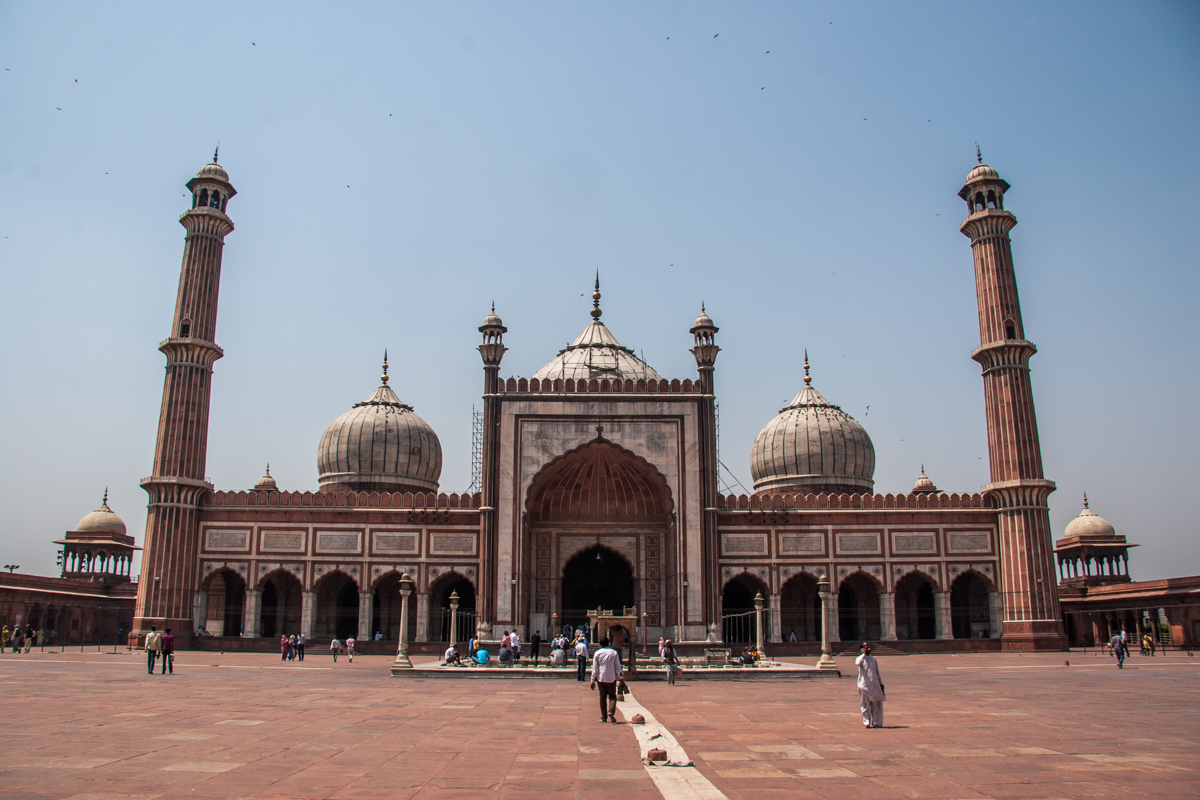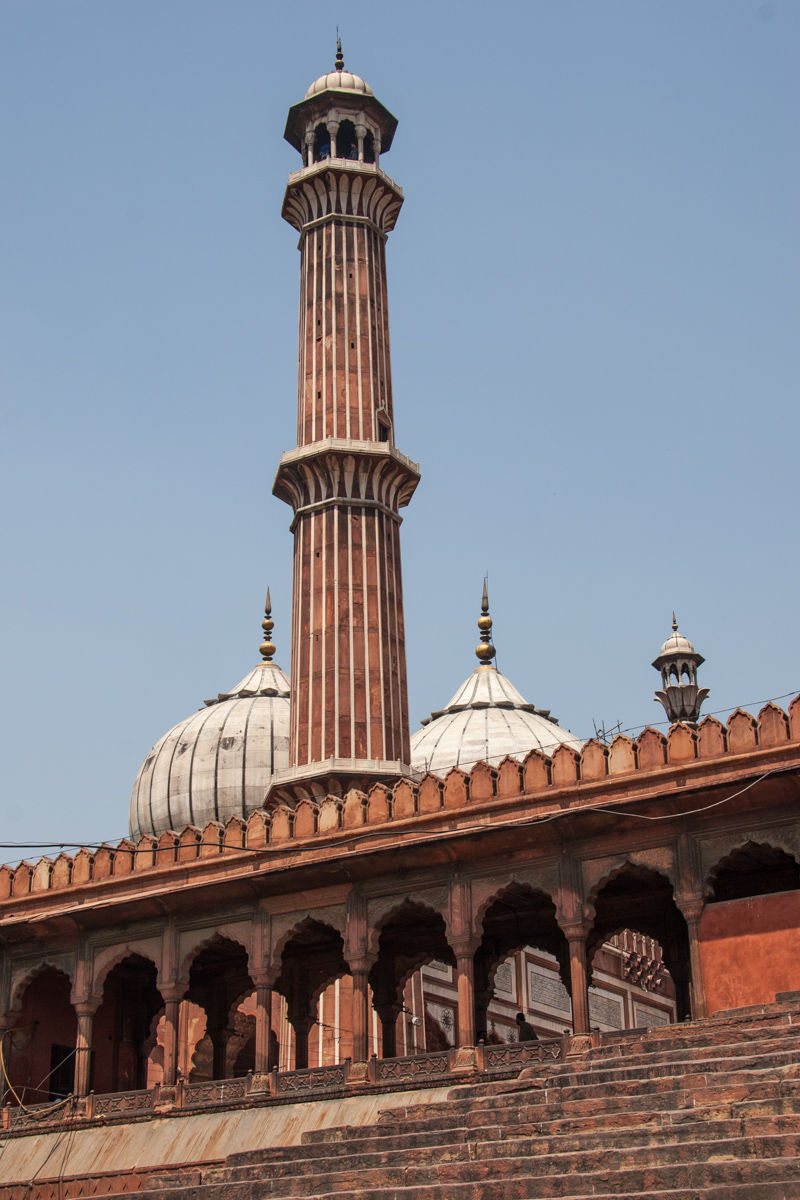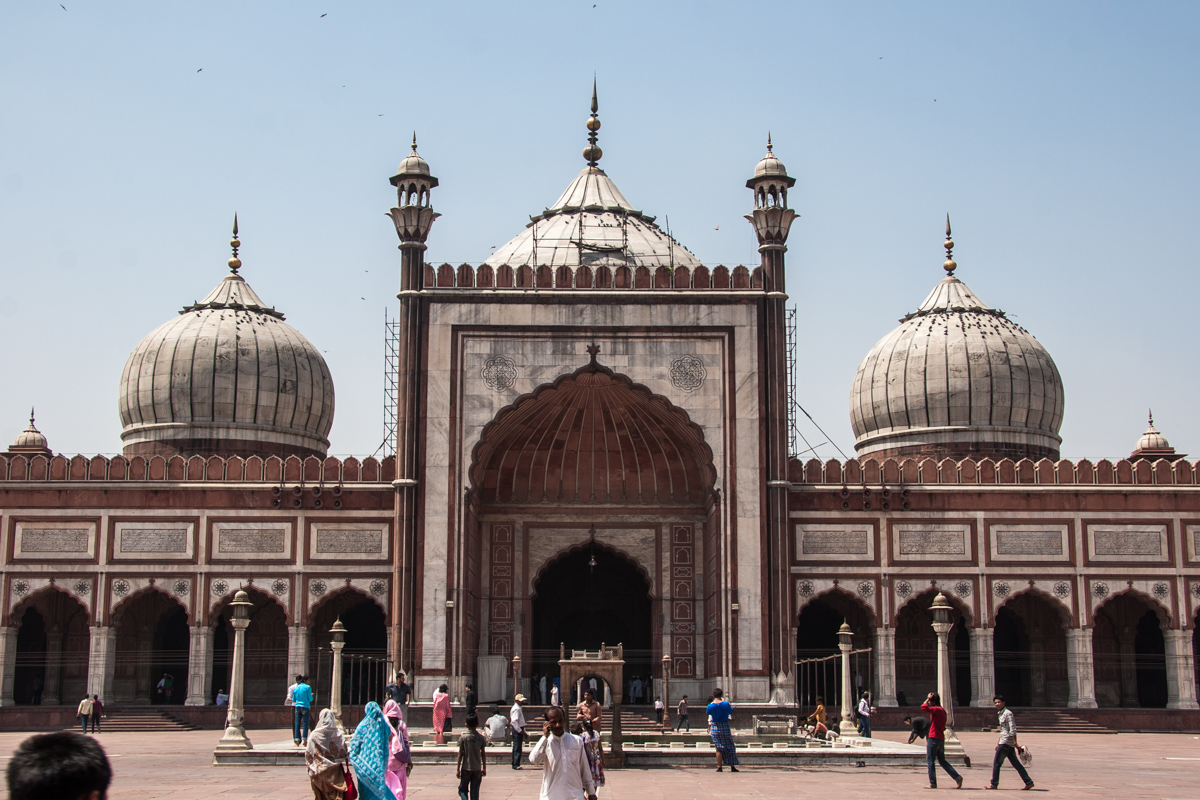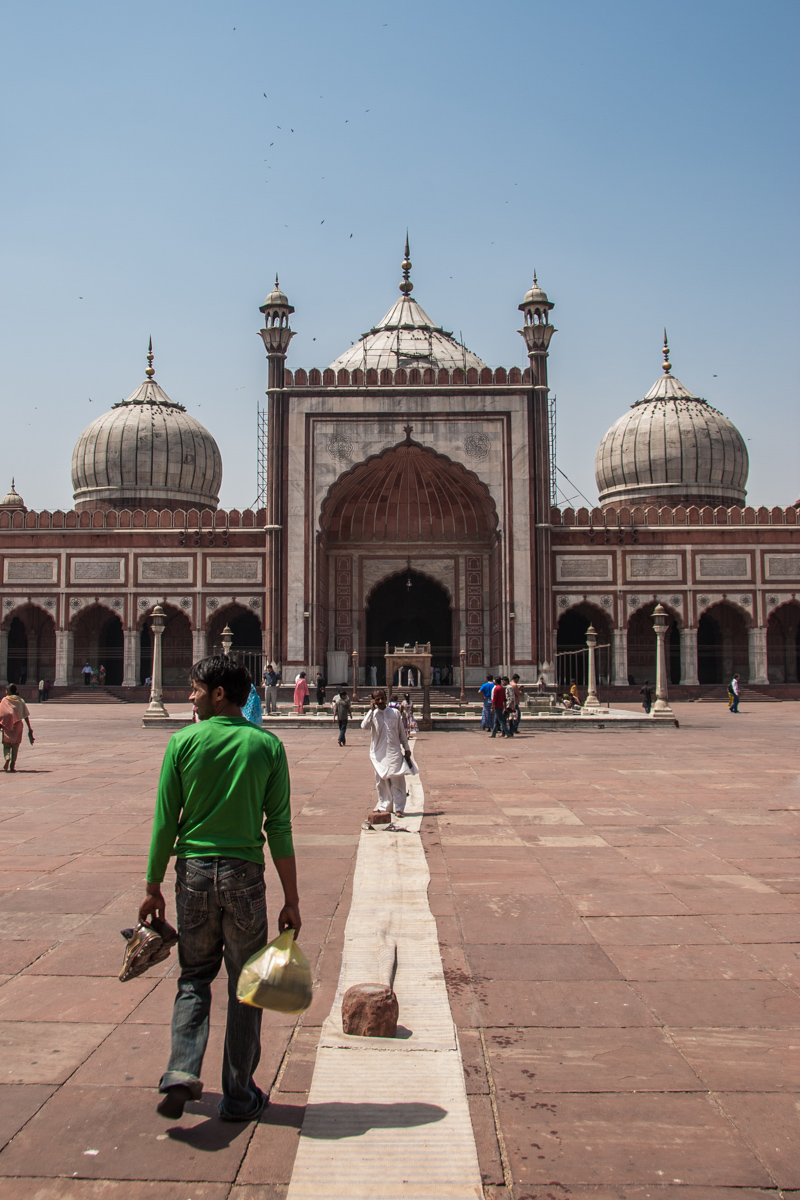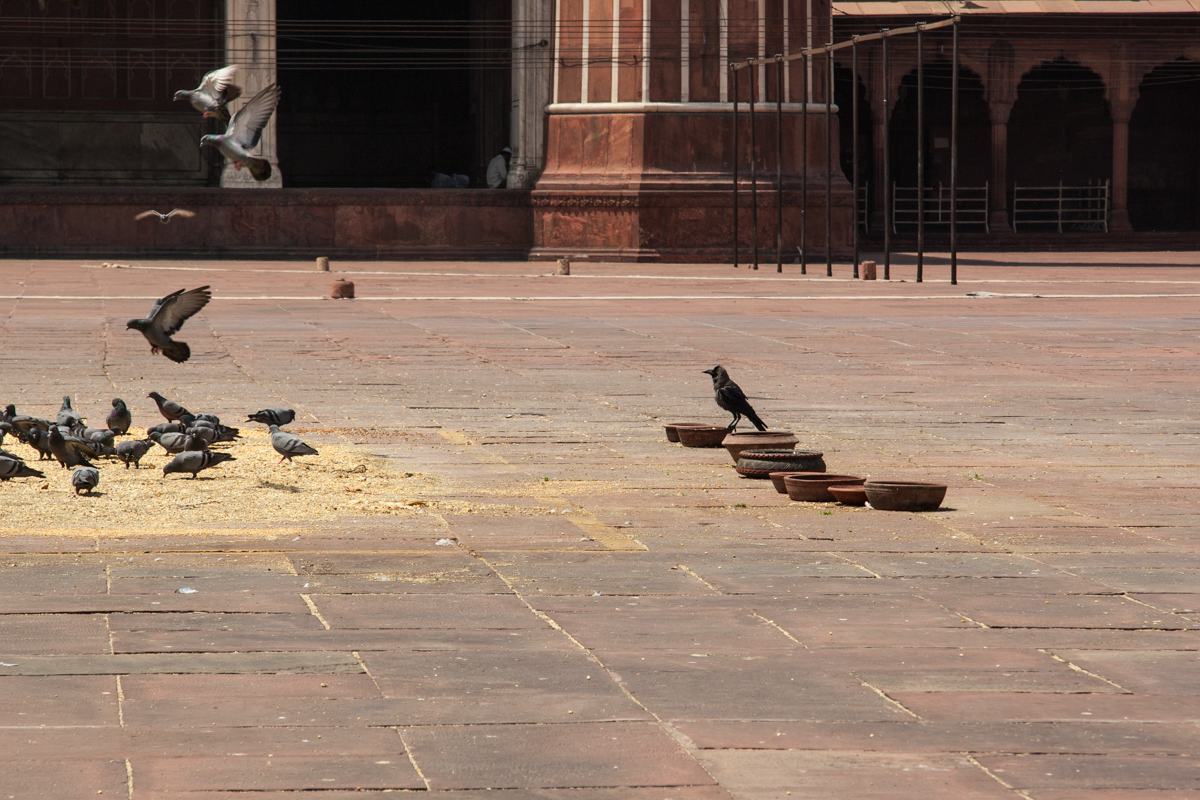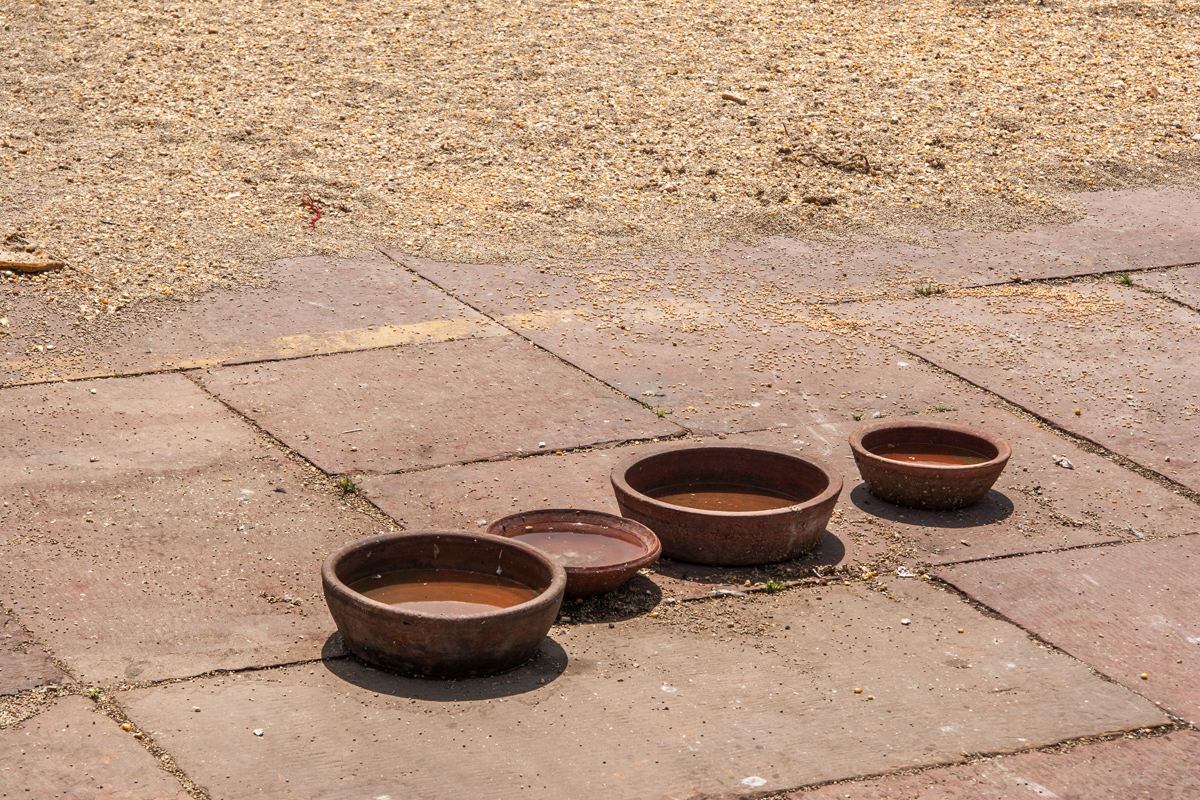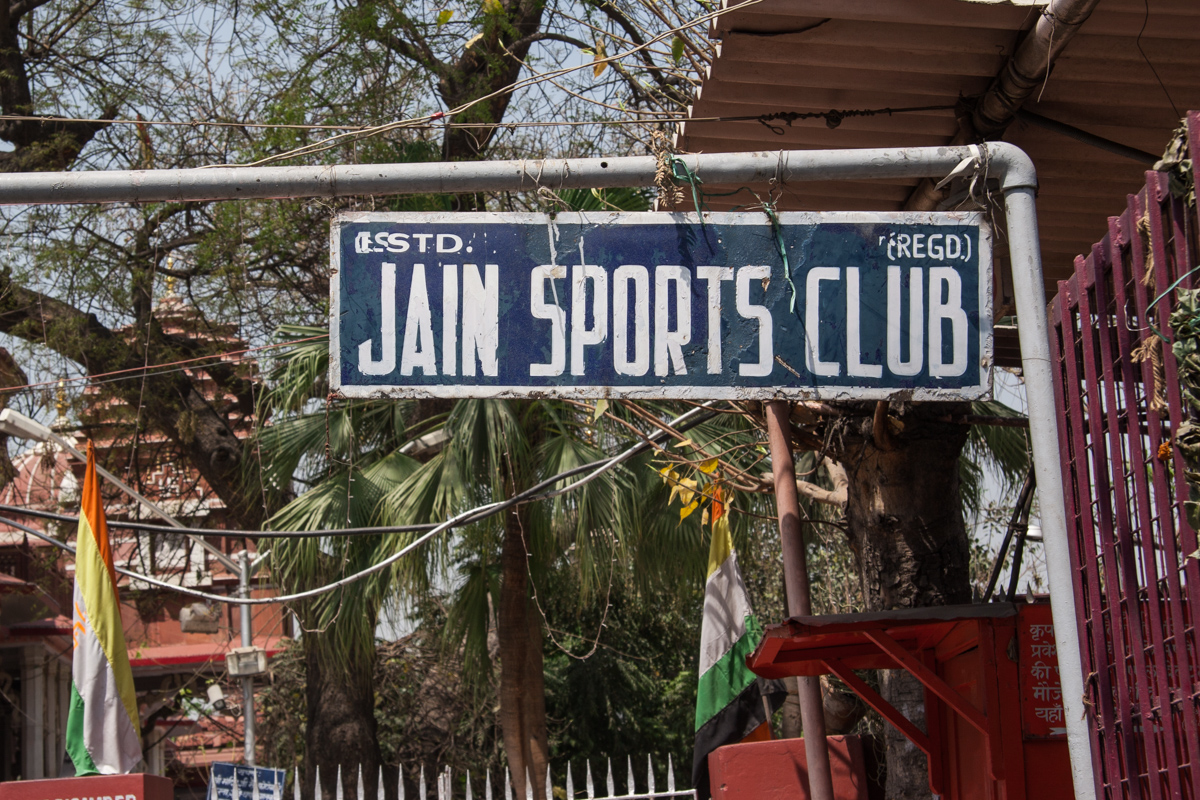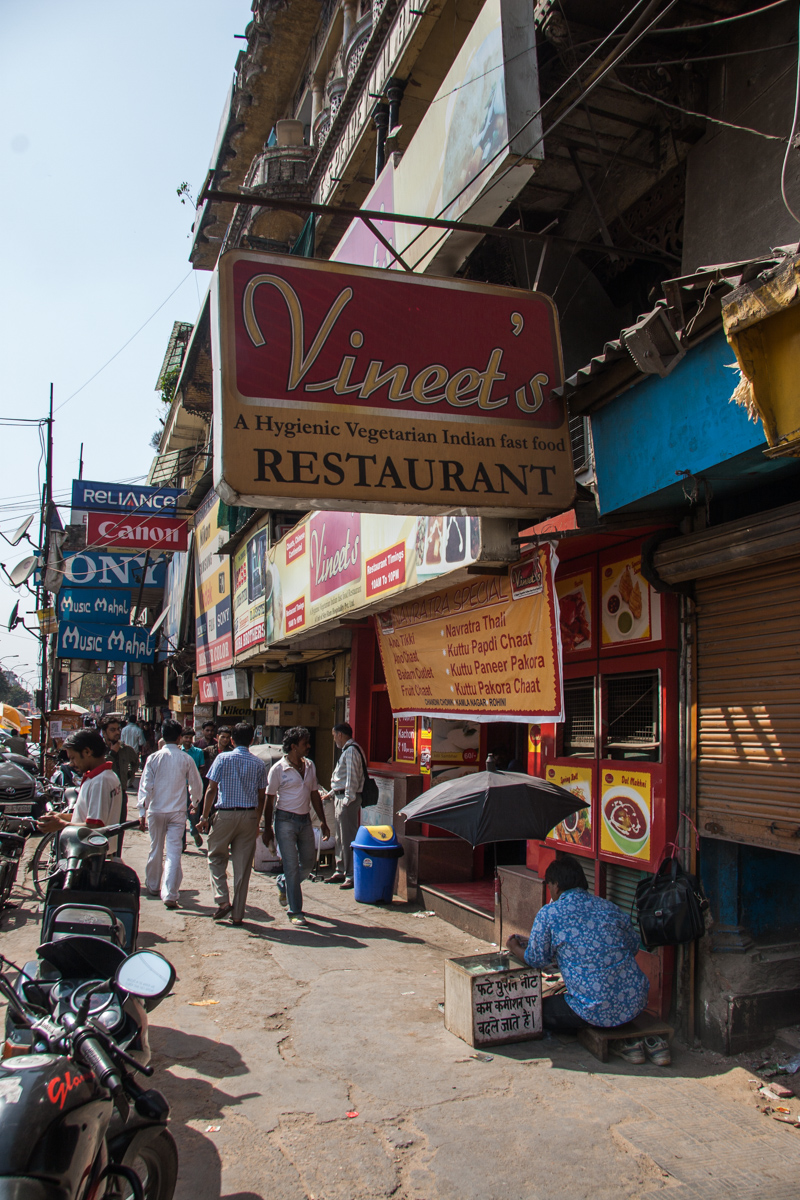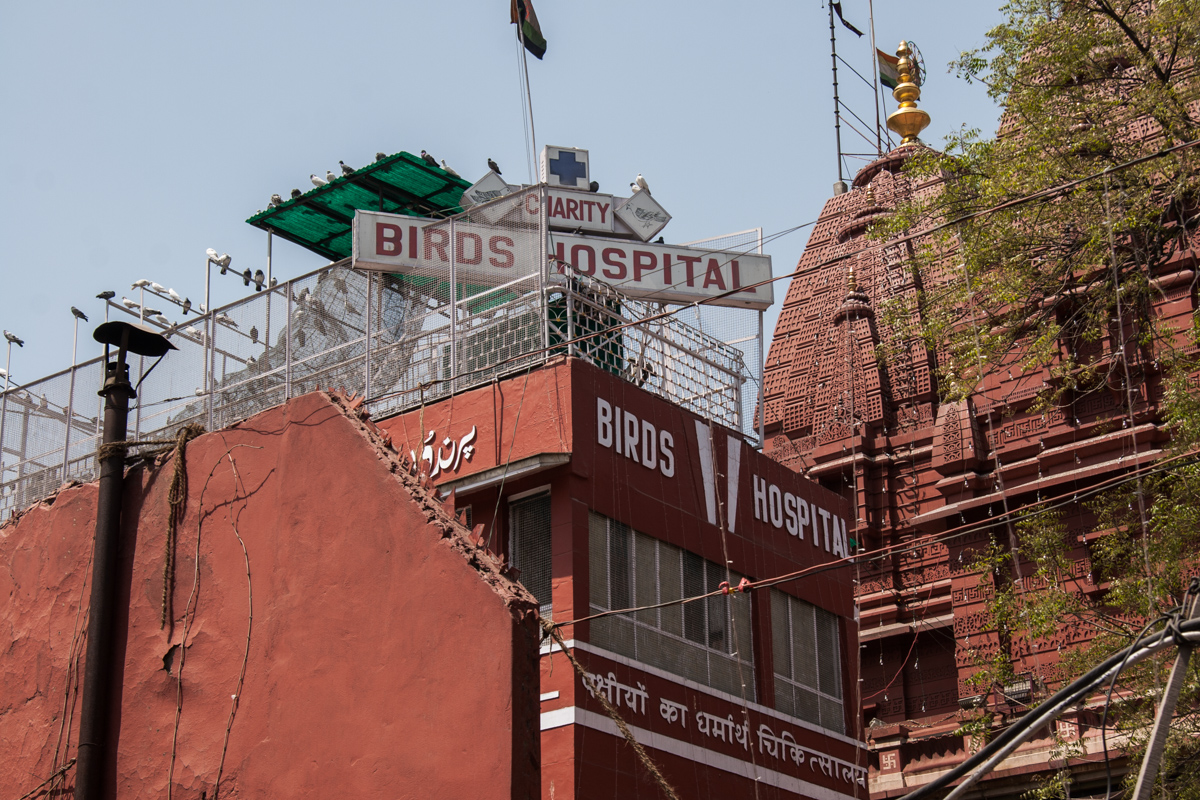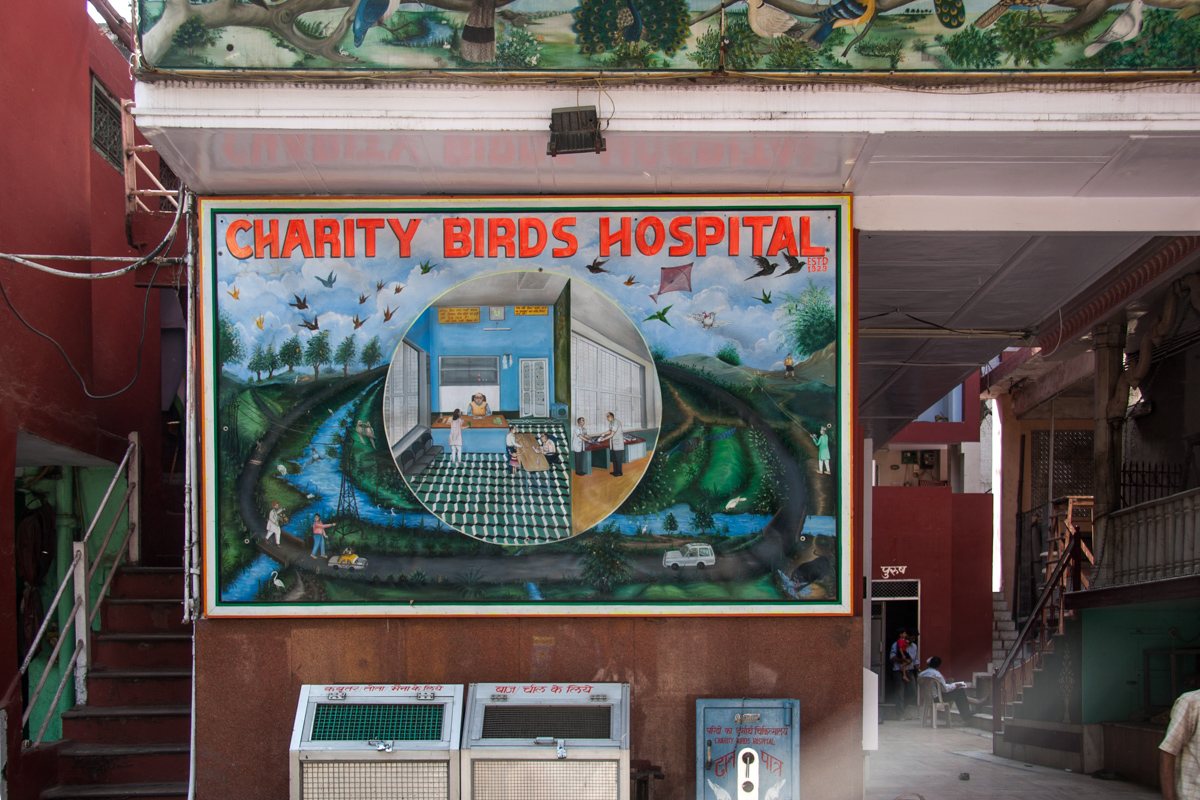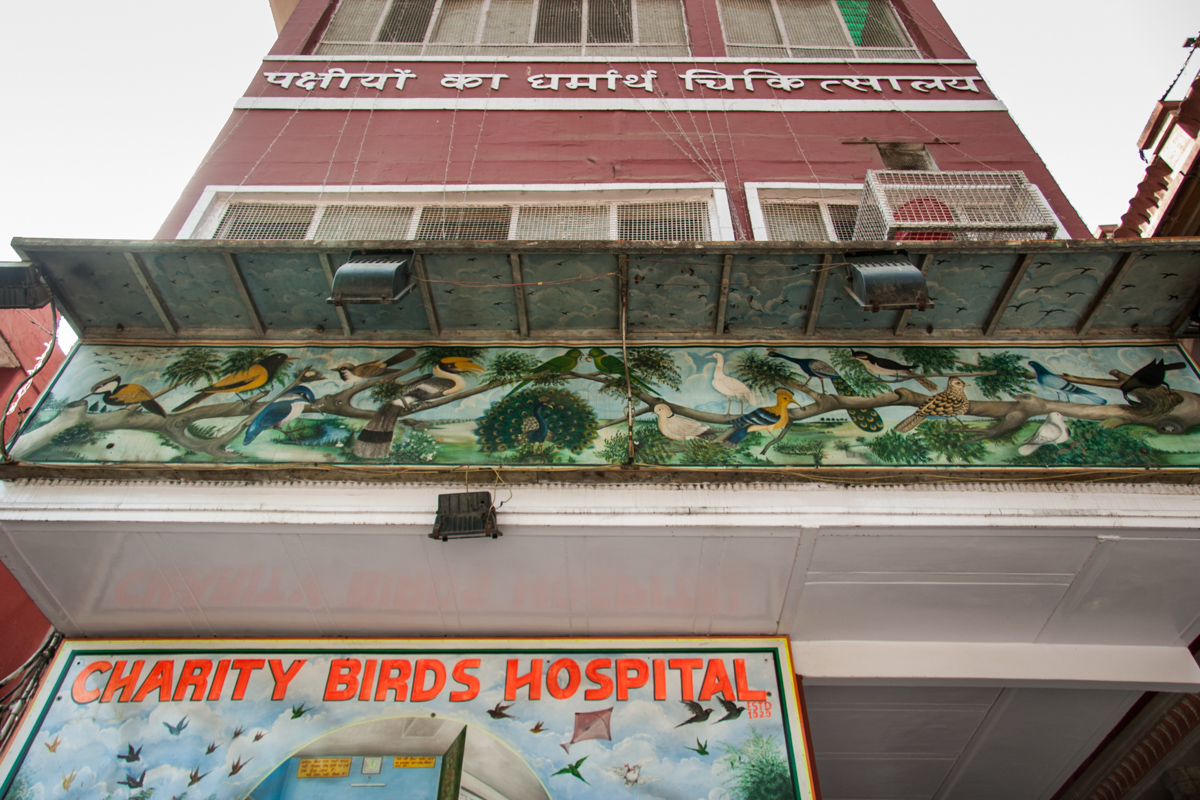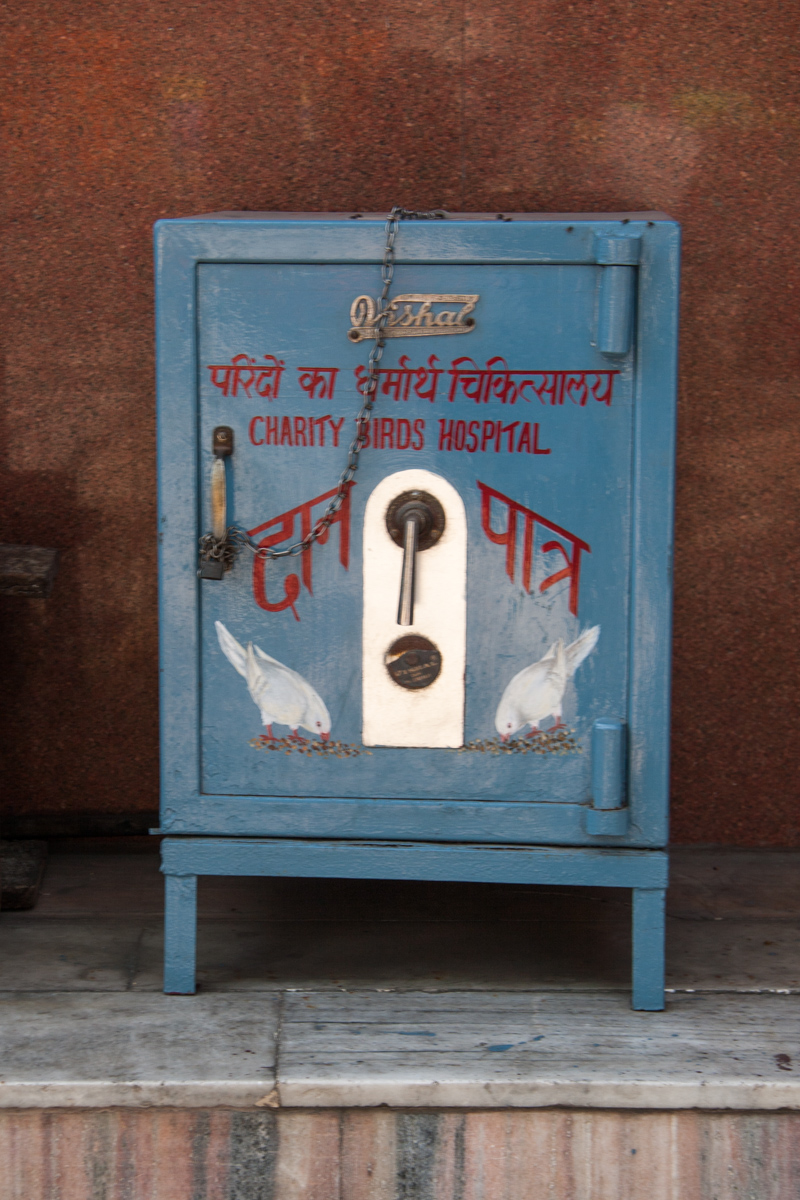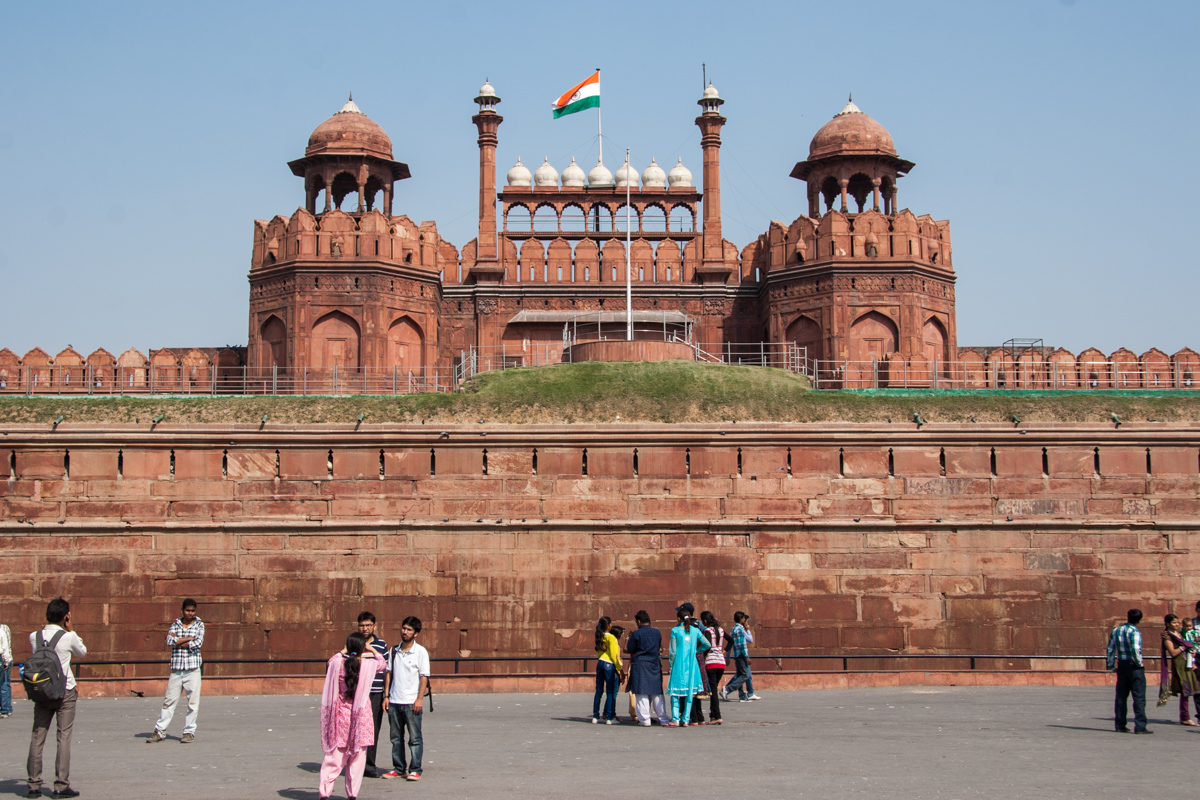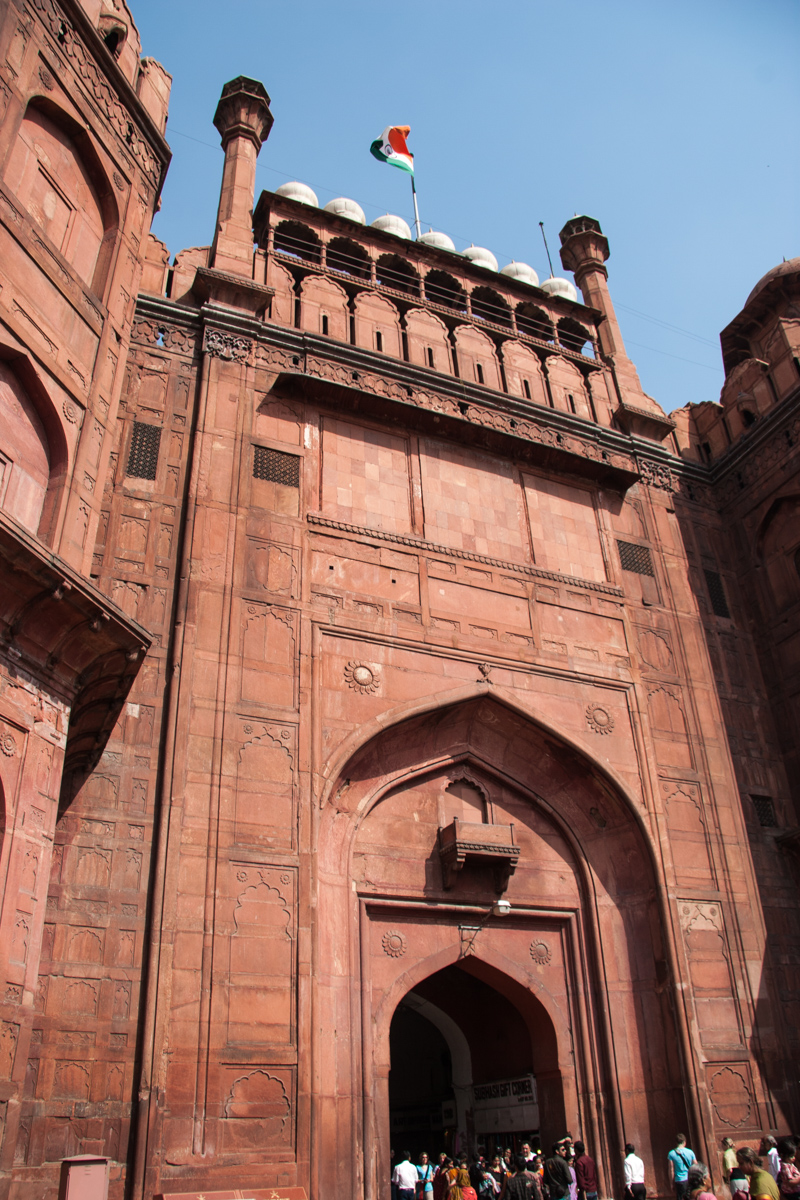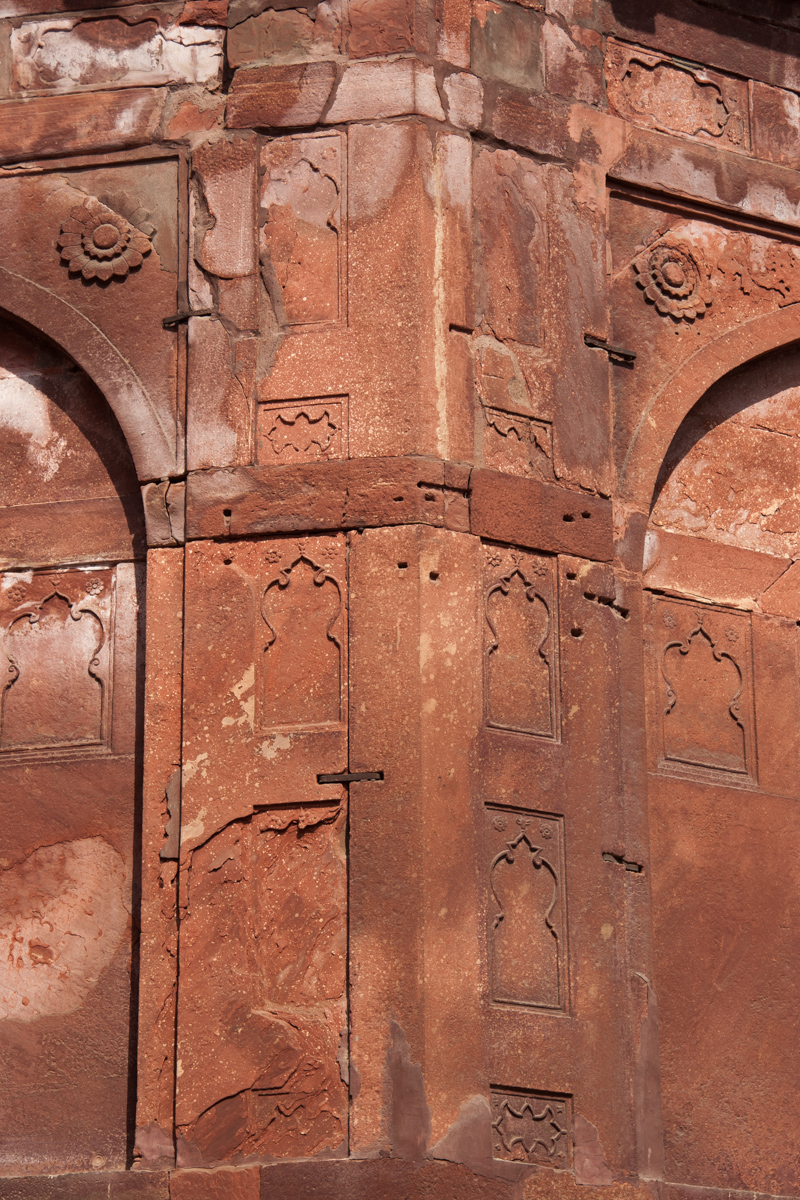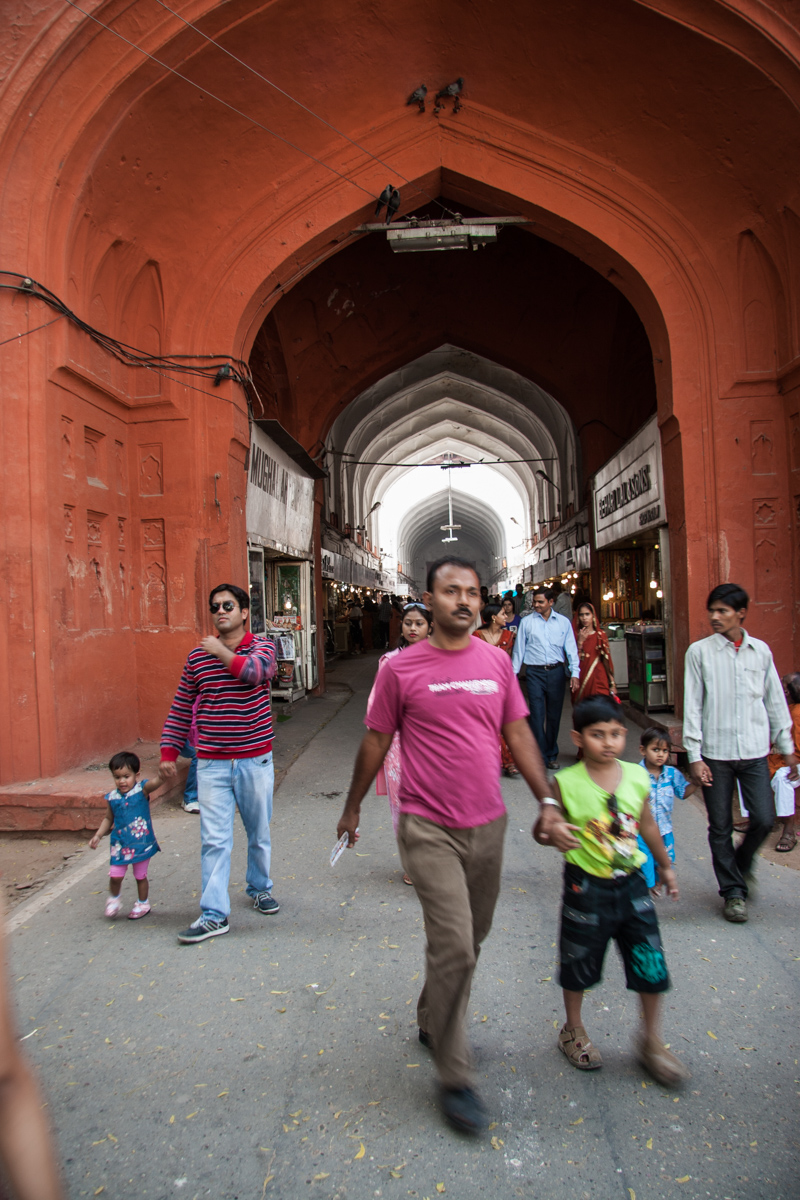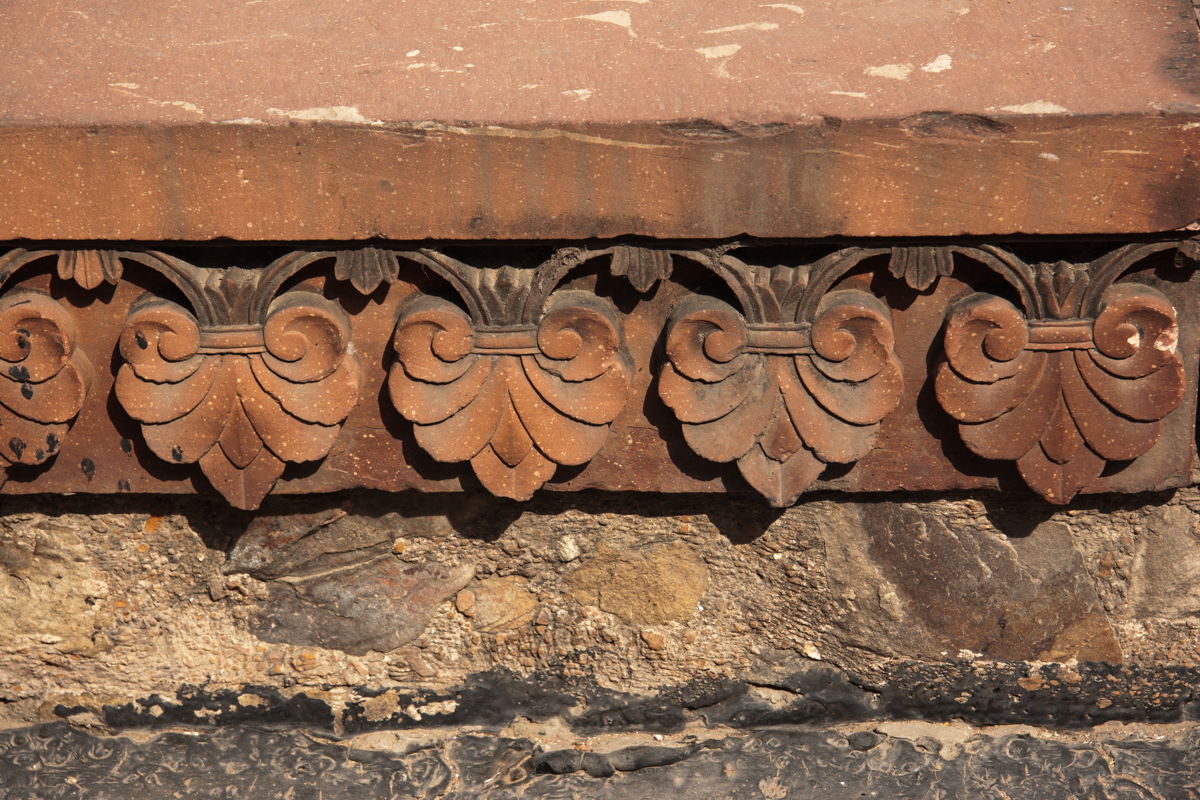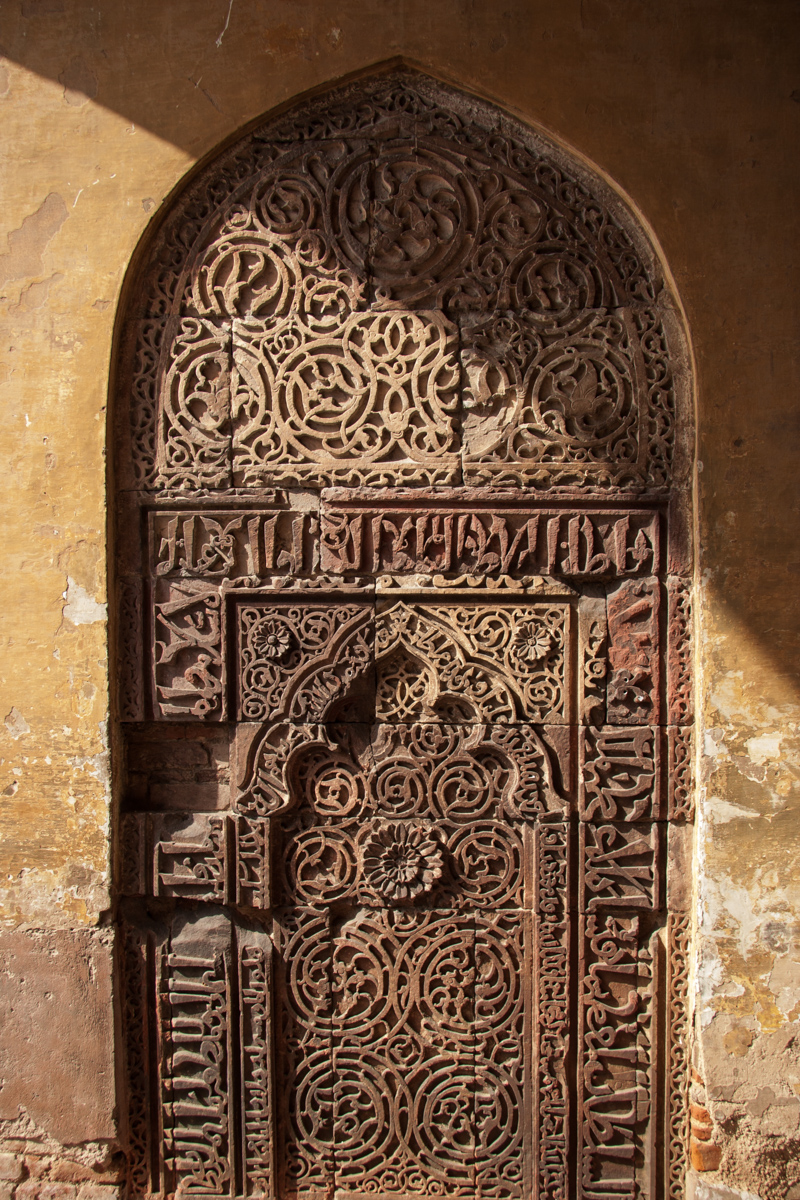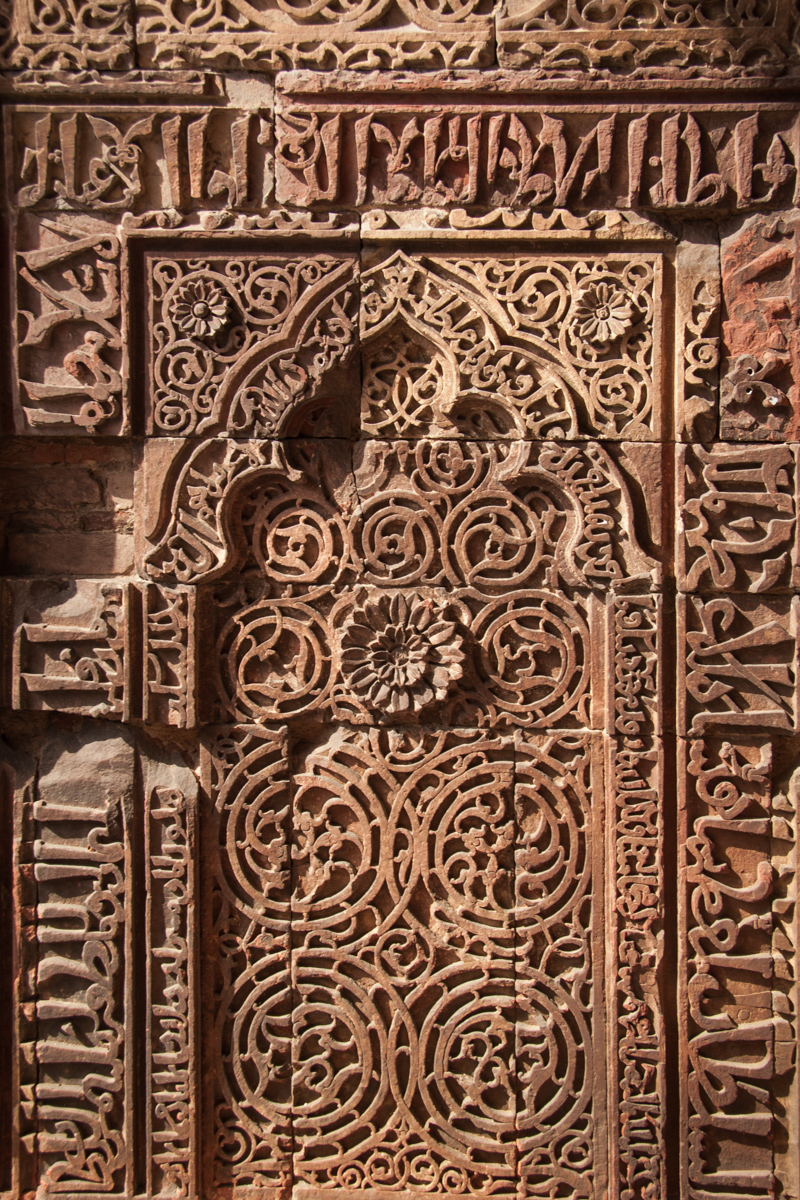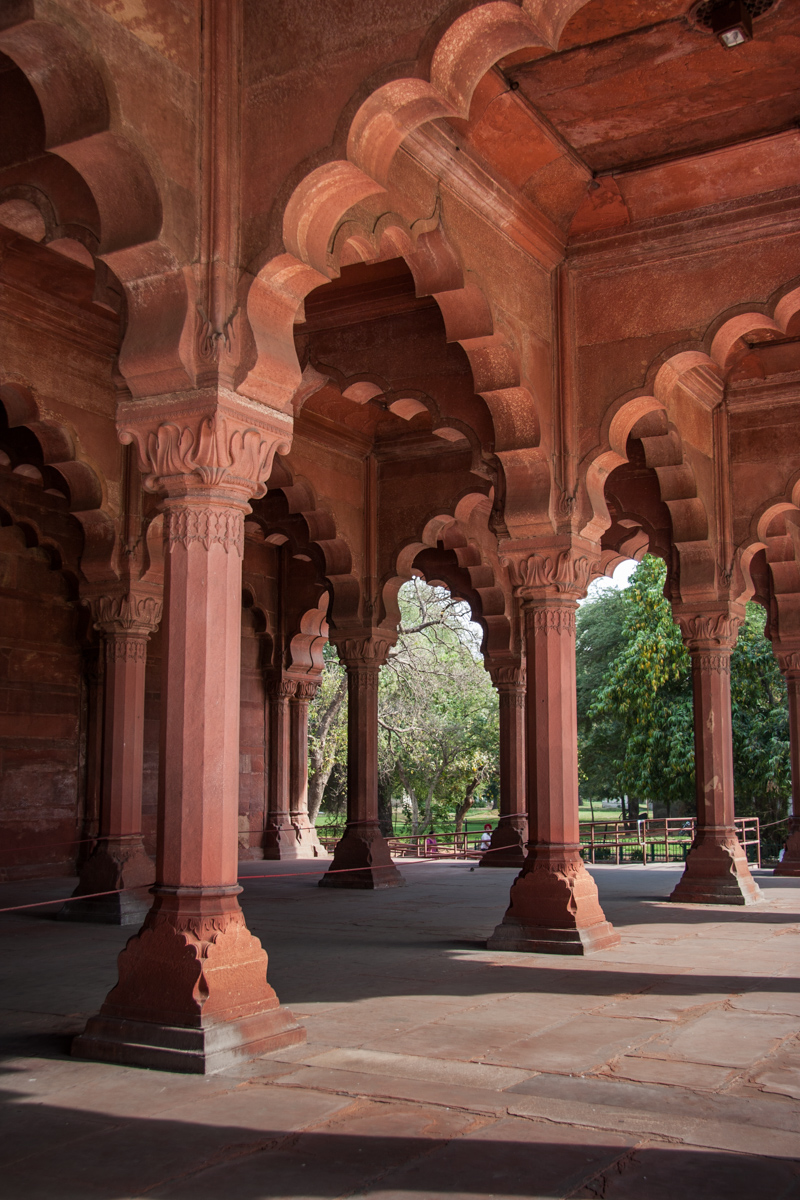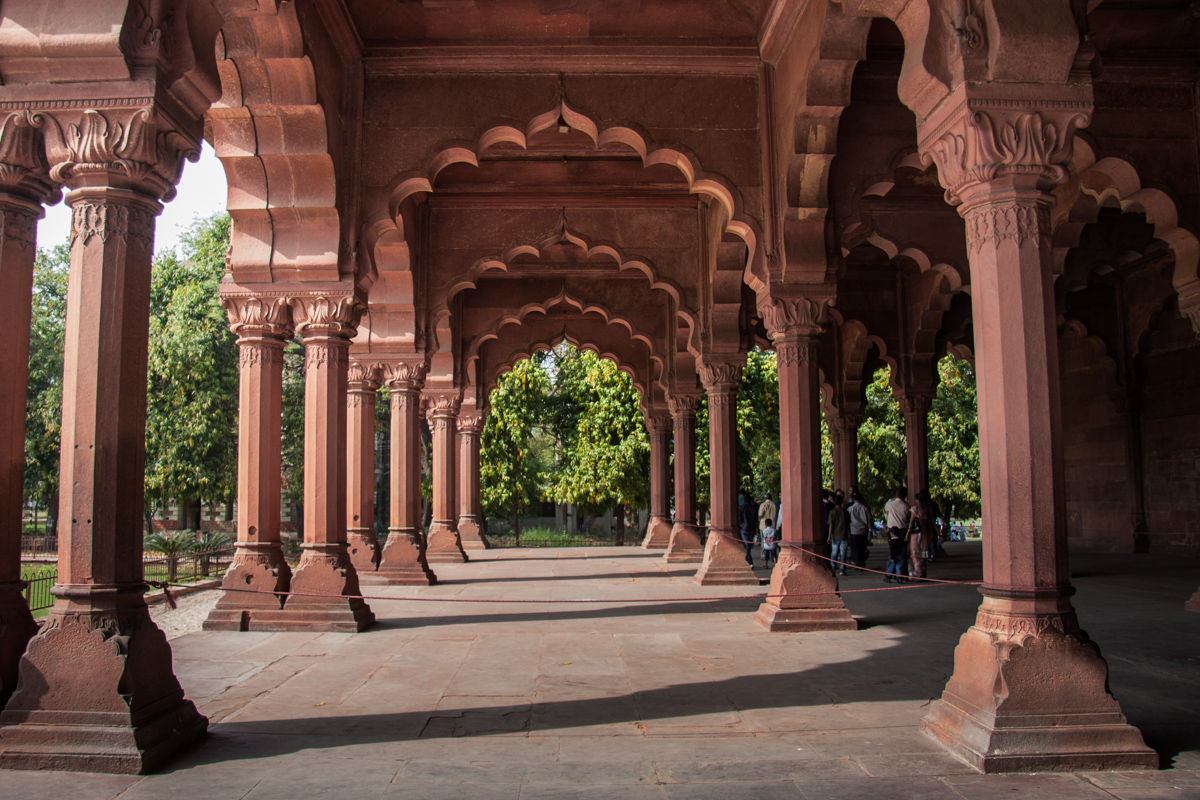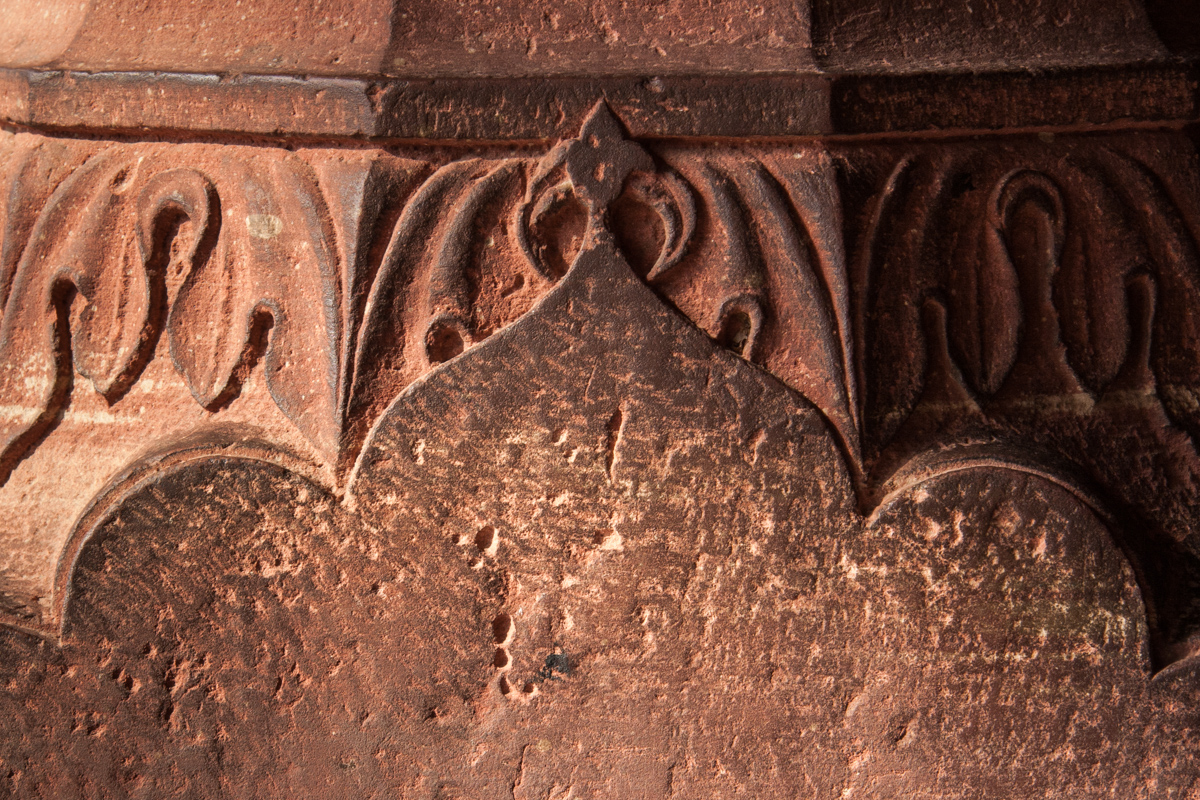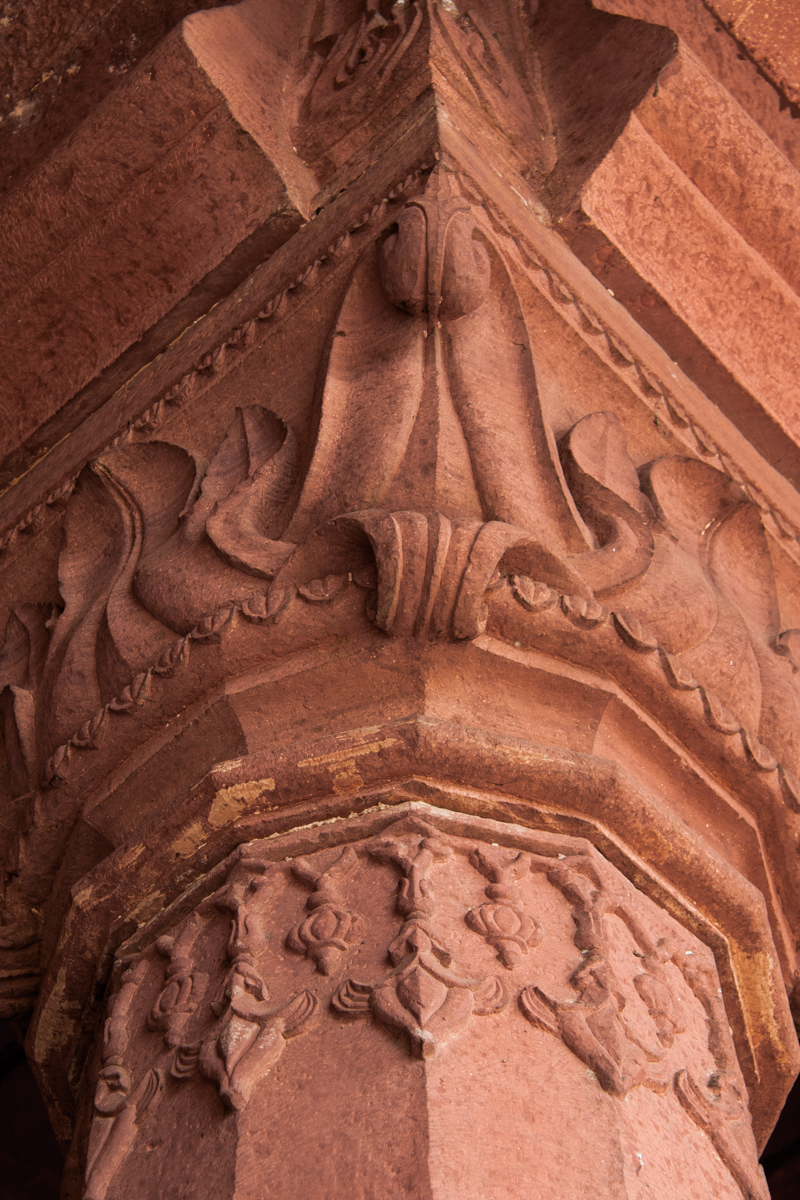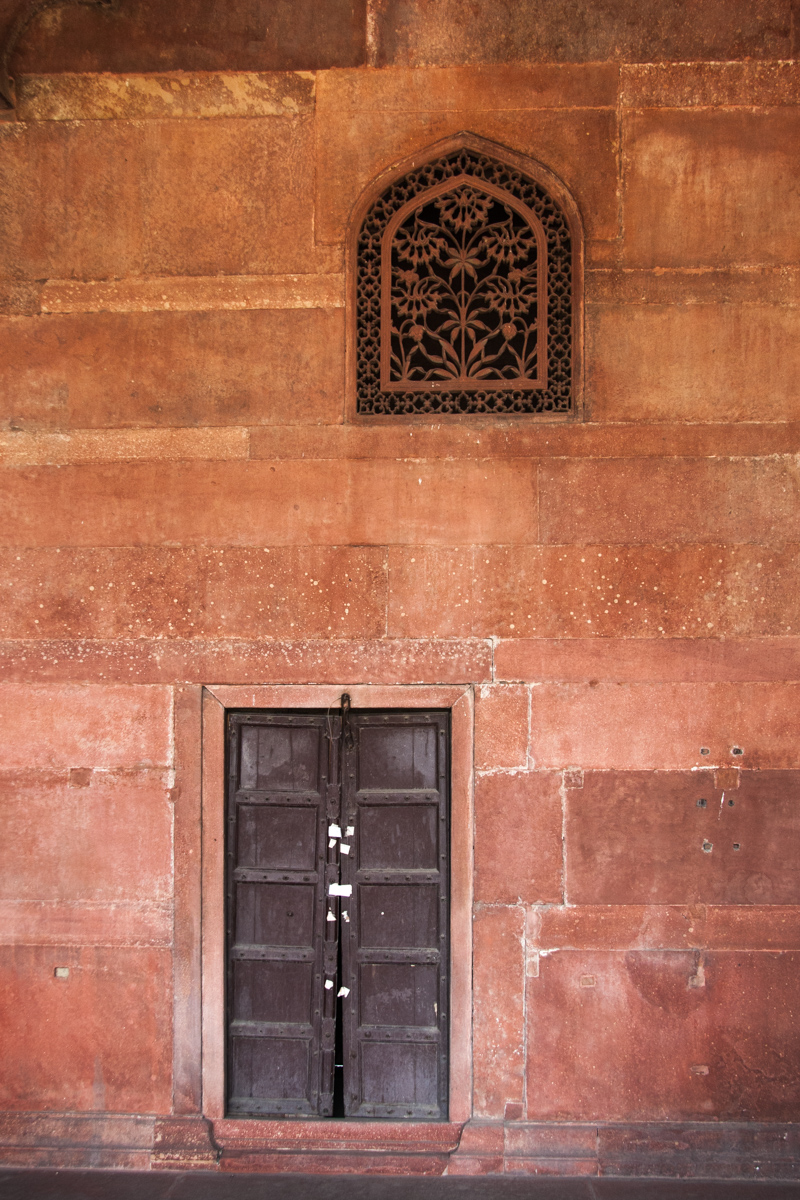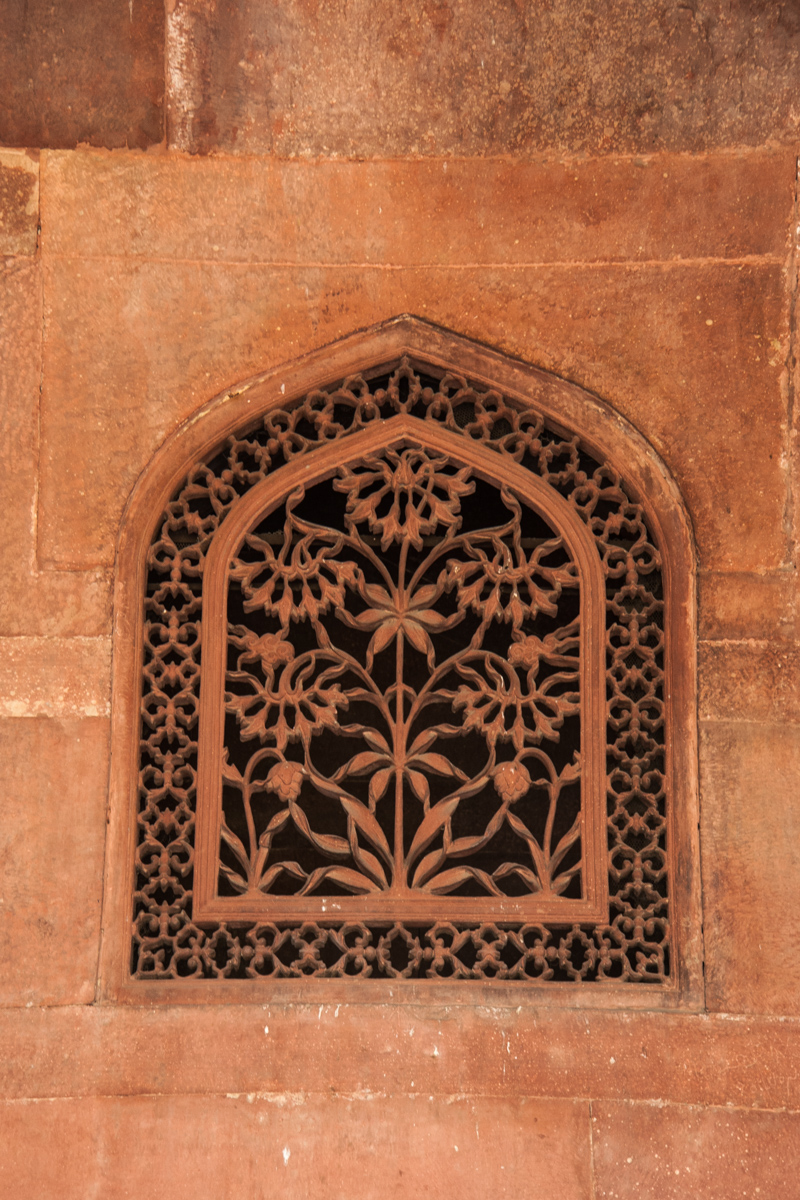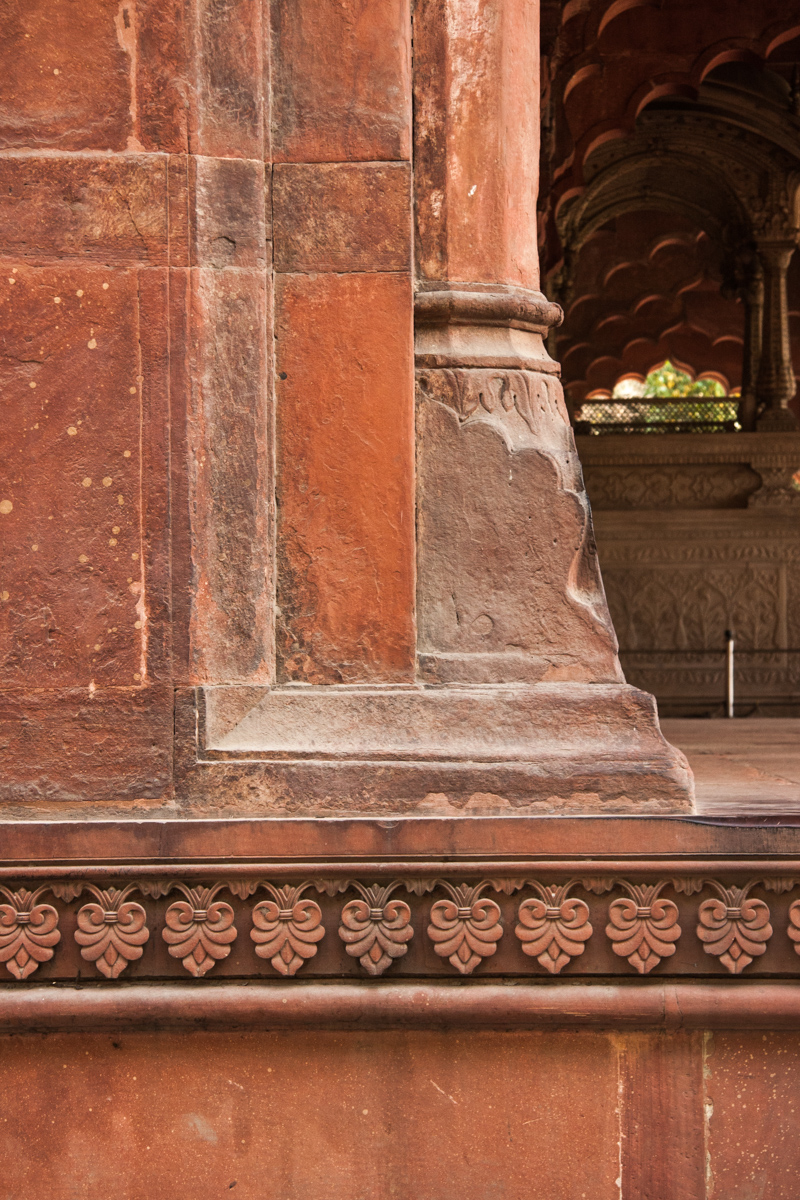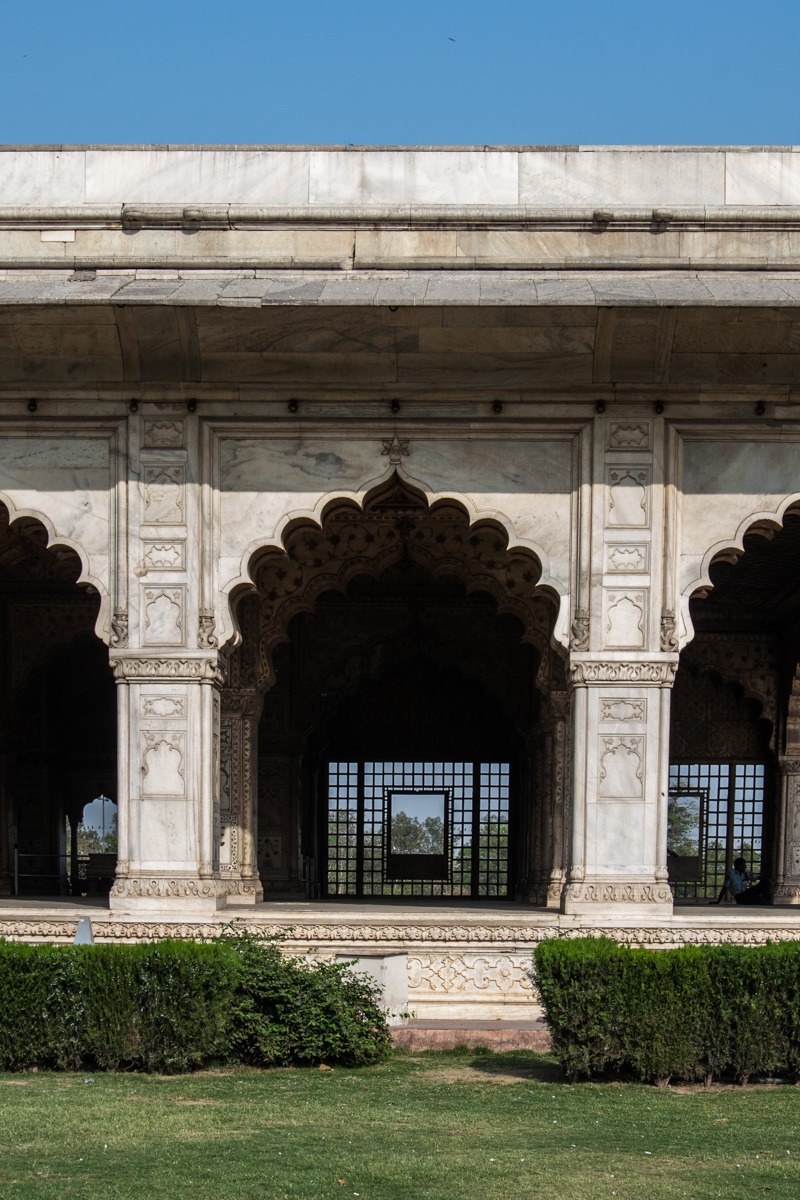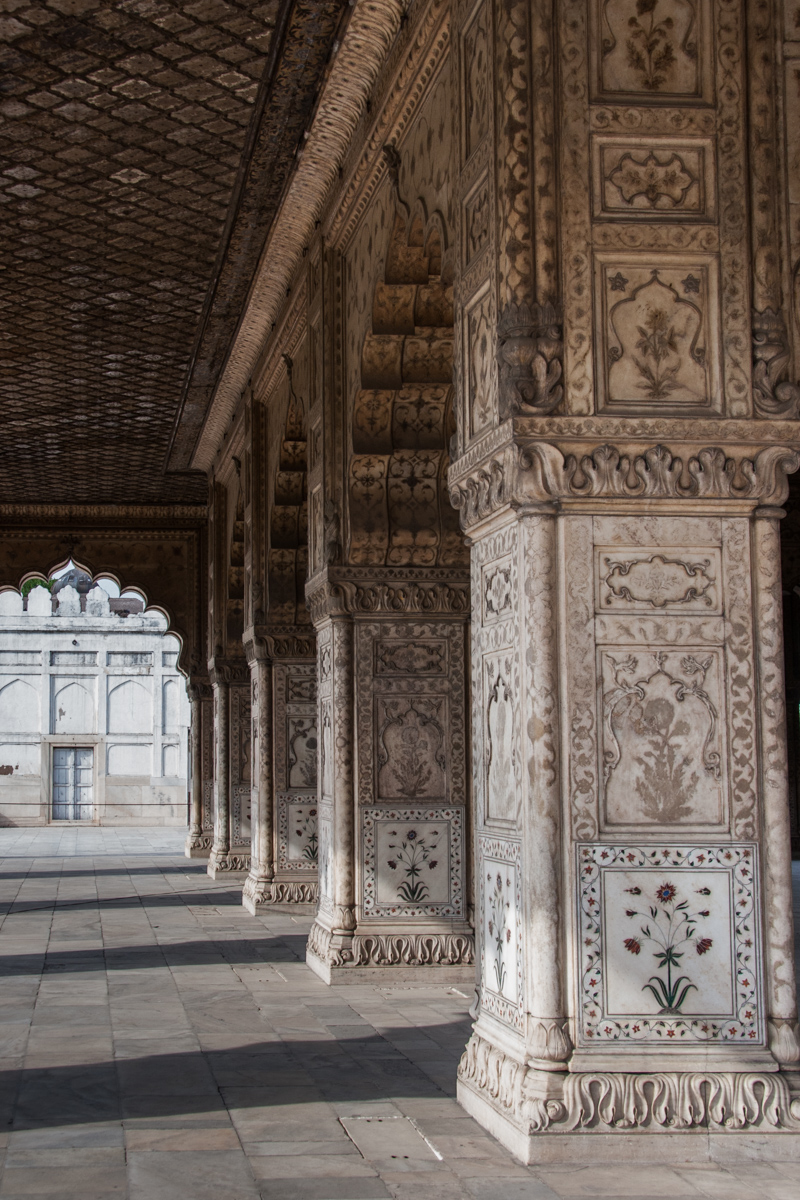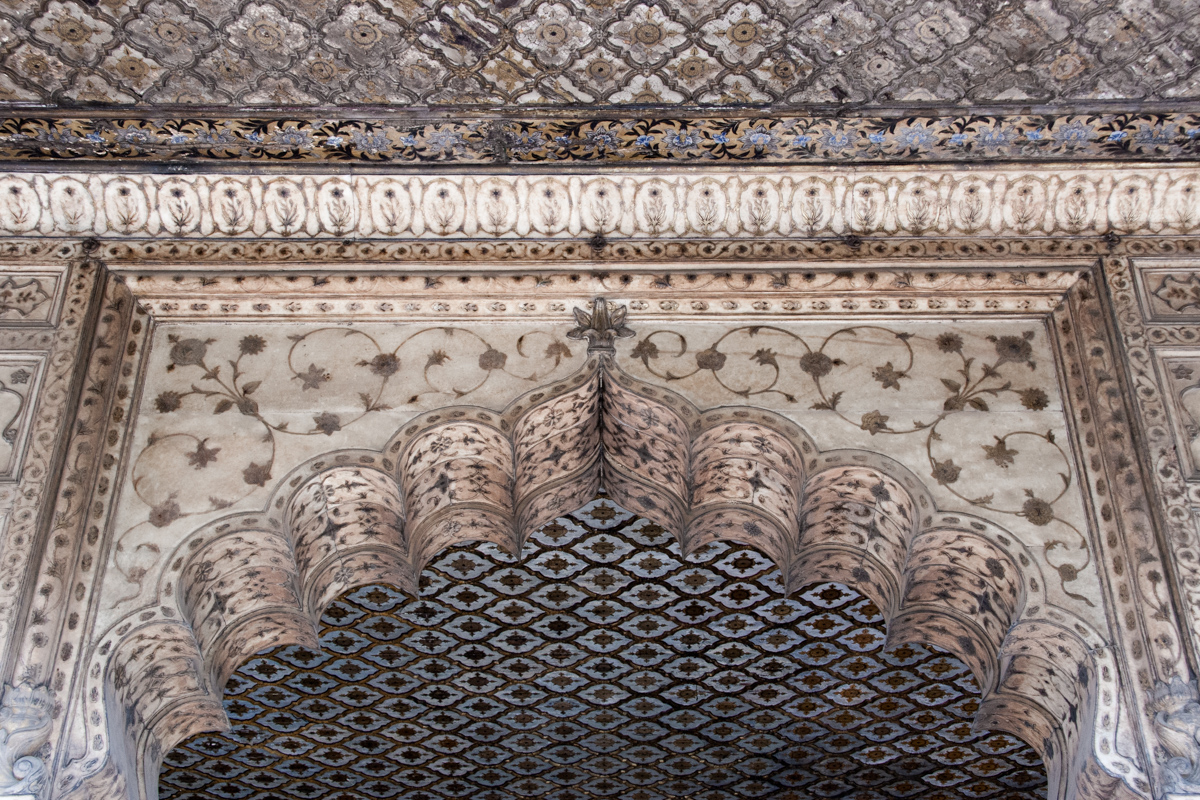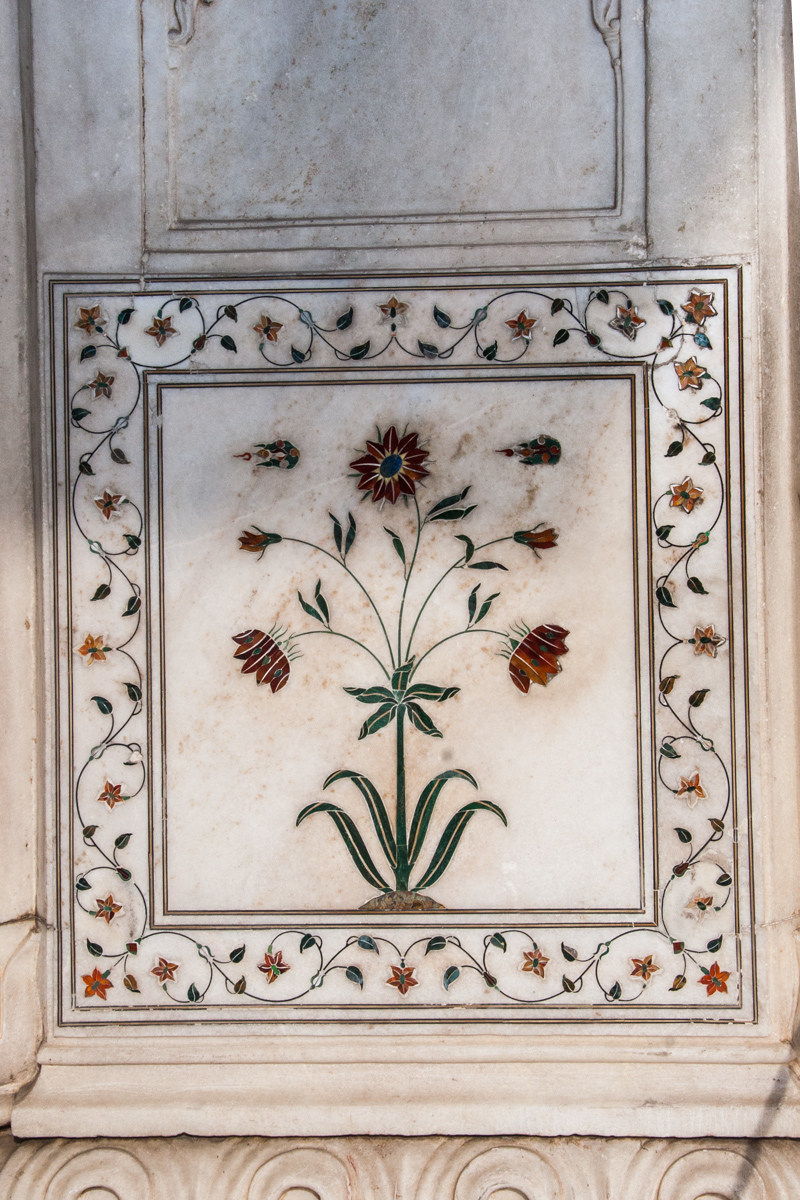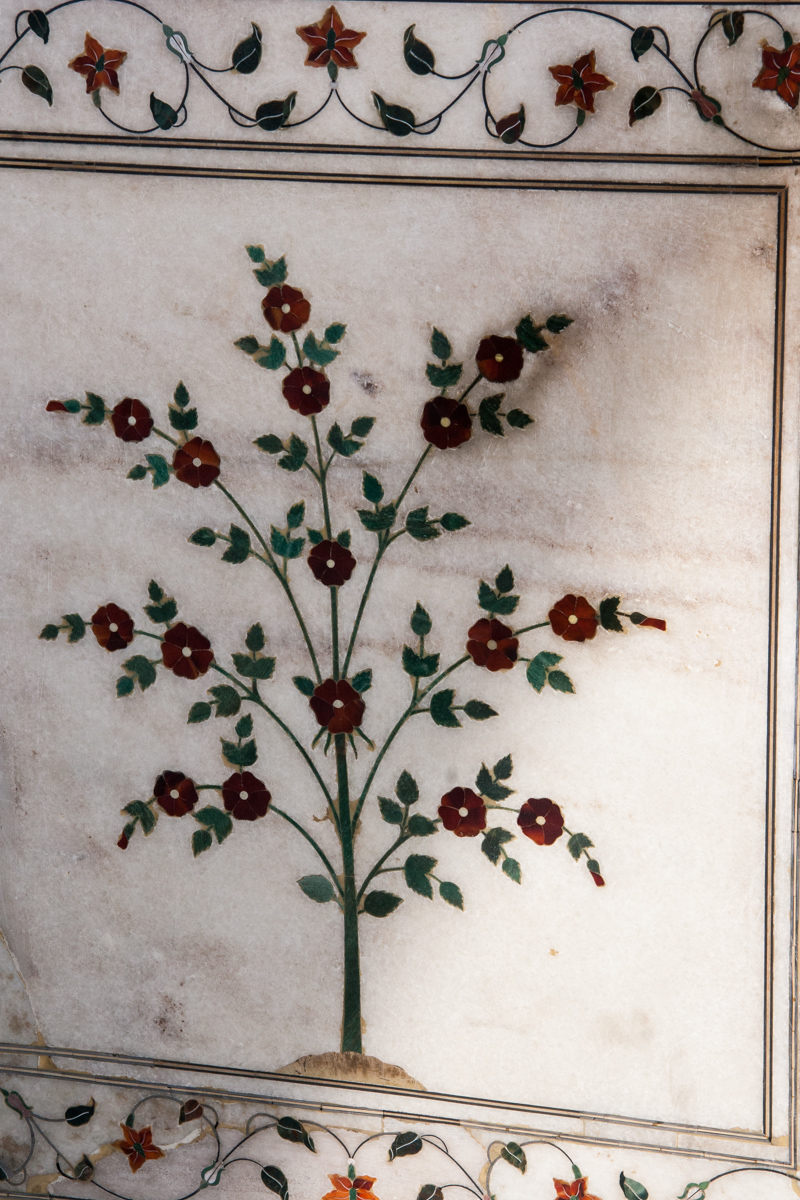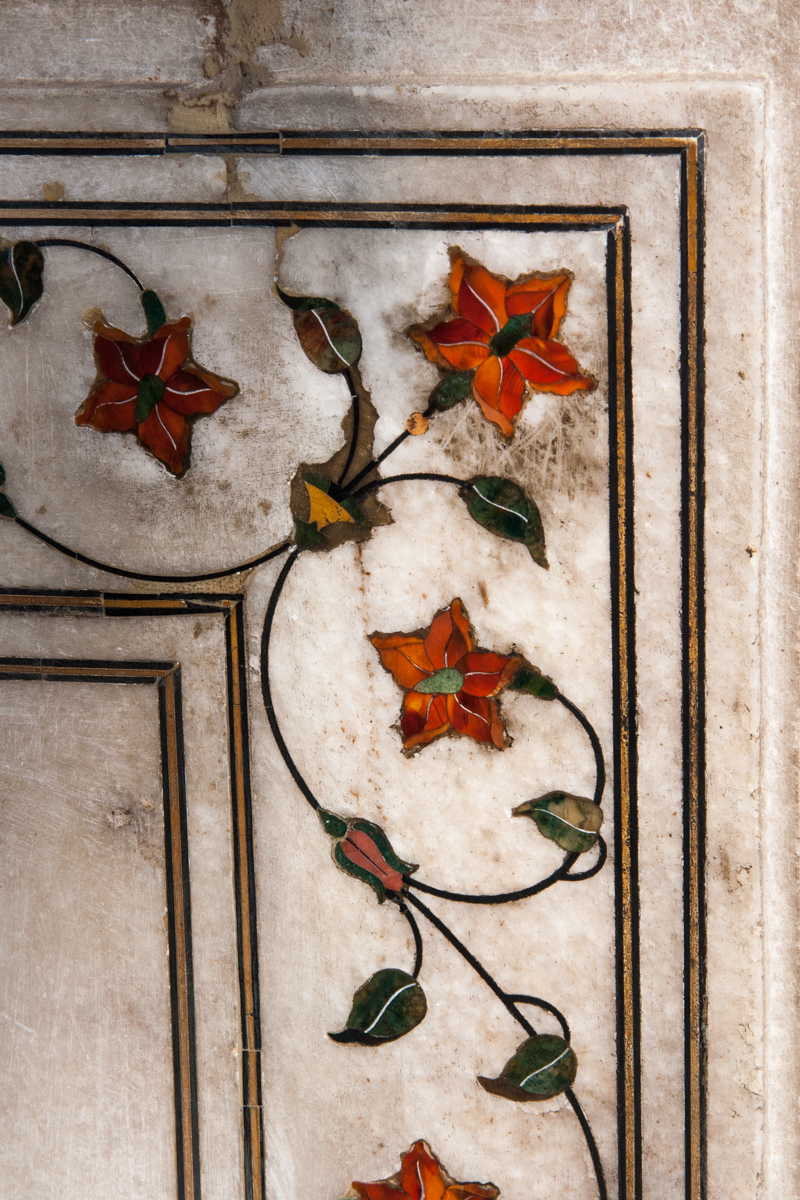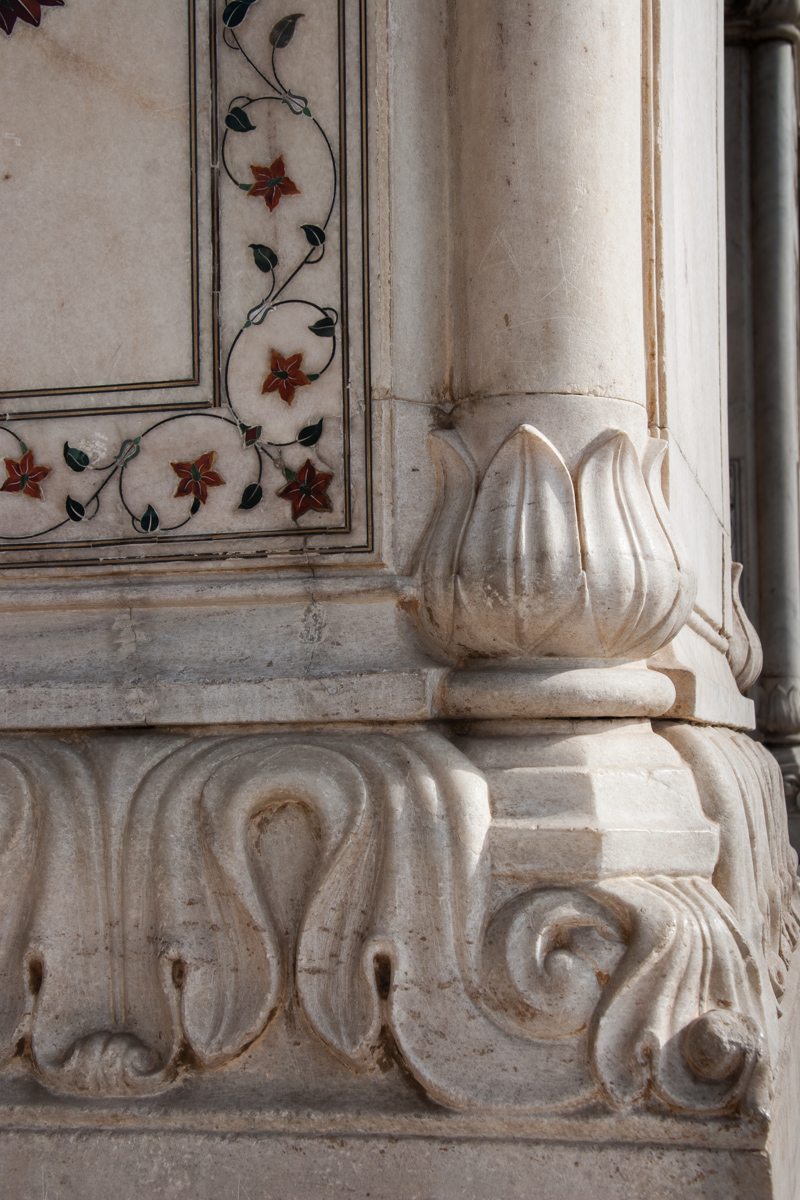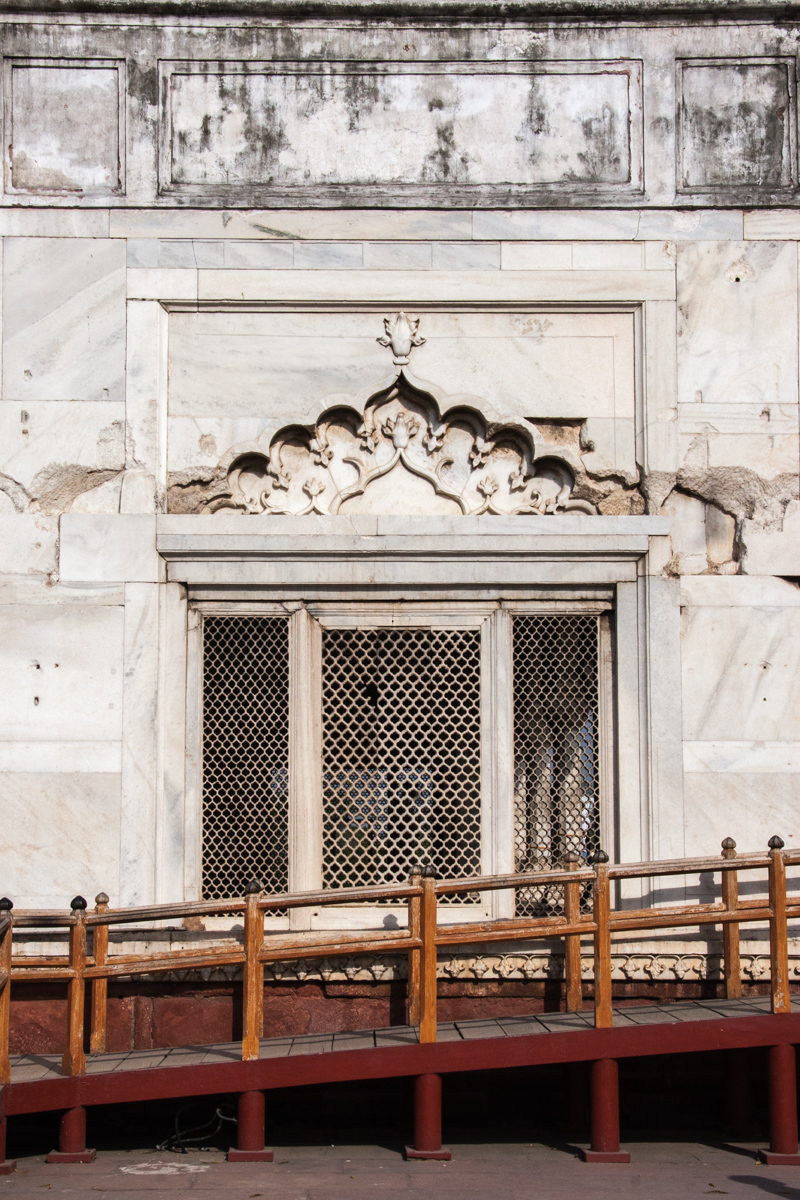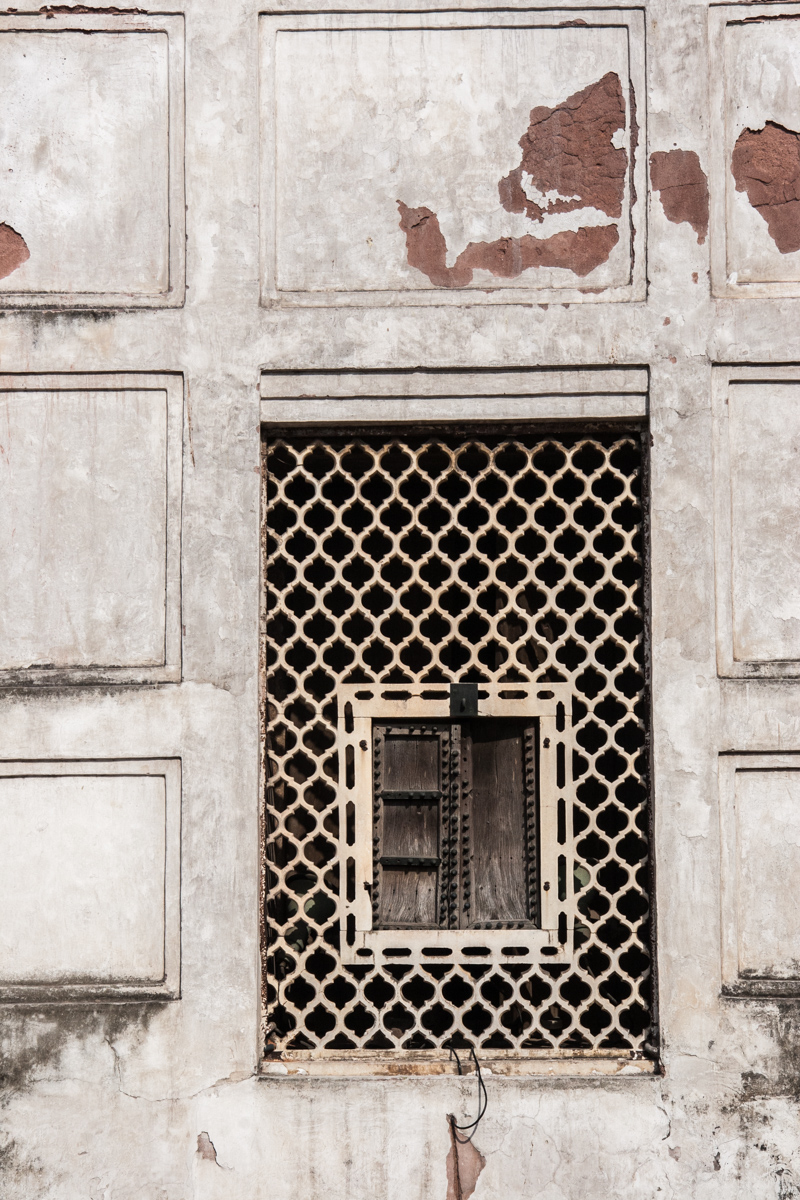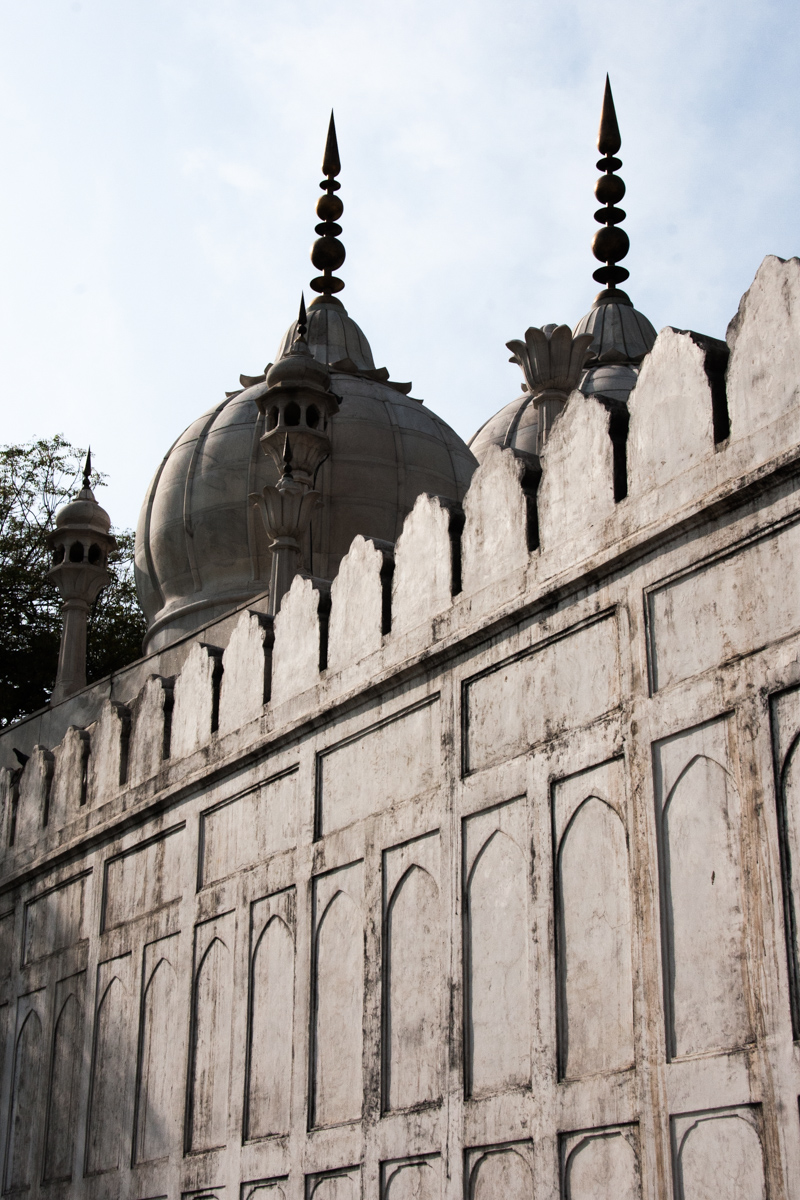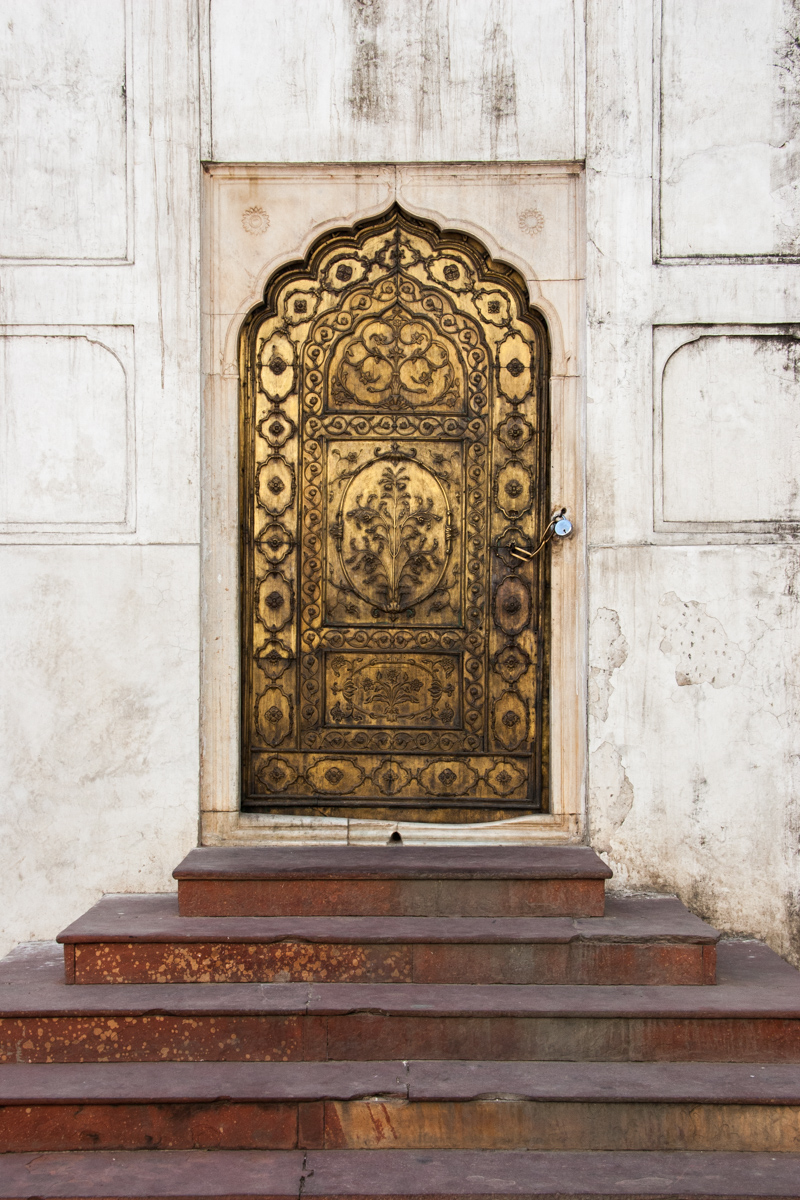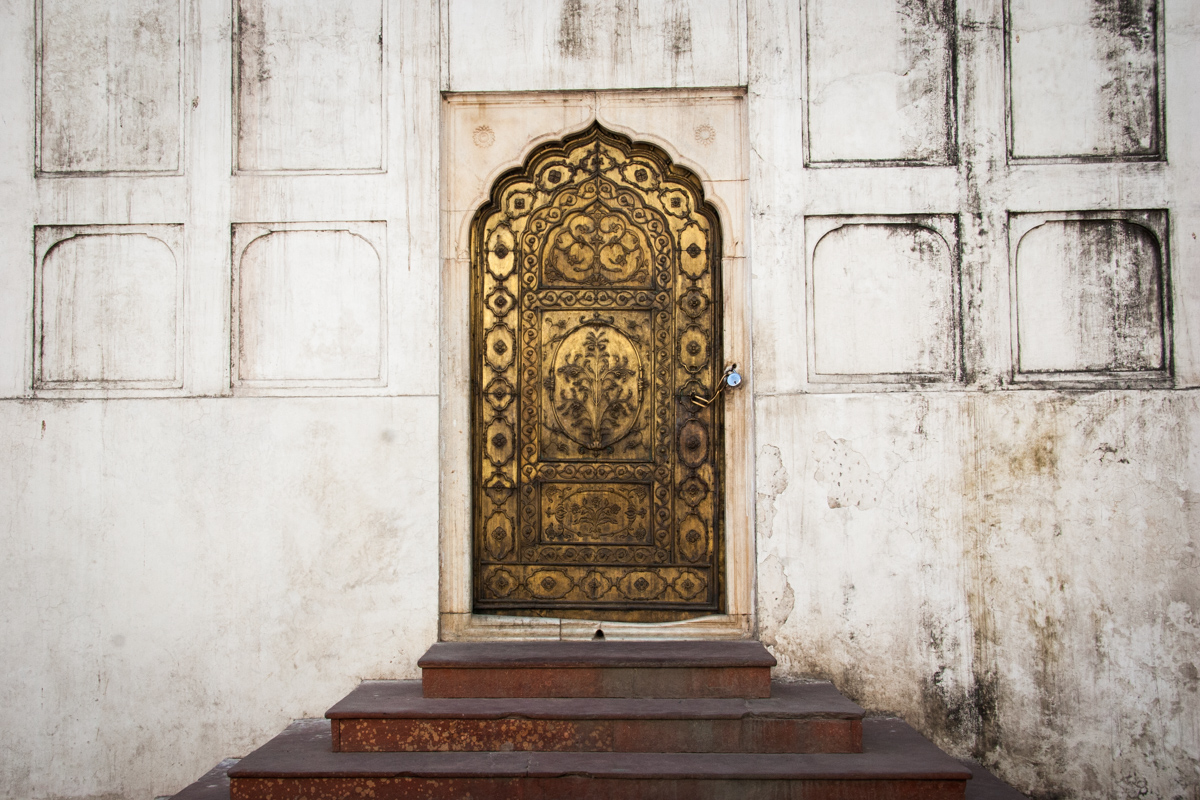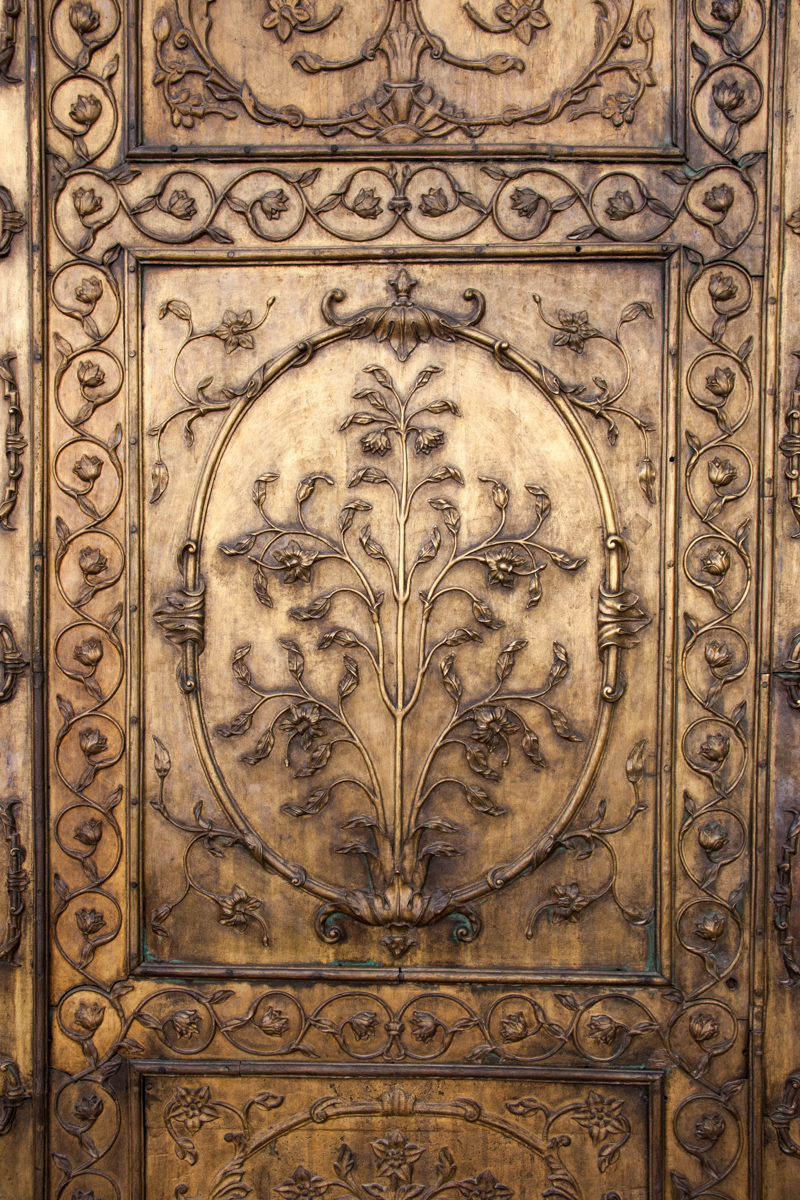The trip back to Delhi from Agra was our last train ride, and our last and most exasperating experience with the New Delhi train station. We arrived quite late, after 11pm. As soon as we set foot on the platform, a very aggressive tout cornered us and tried to get us to take his cab. After politely declining at least five times, I started to lose my cool, and came as close to yelling at him as I did to anyone on this trip: “Sir, I have asked you politely several times to leave us alone. Please don’t make me yell at you!” For whatever reason, that seemed to do the trick, and he moved on to someone else.
We knew we needed a cab, and also knew generally where the taxis would be, so we humped our bags up the tall staircase from the platform and along the corridor toward the stairs leading down to the street. As soon as we started descending the stairs, about three flights worth, a pack of about a dozen cab drivers began pointing and shouting at us. I try really, really hard to be as polite as I can when I travel, but I had just about had it at this point, and stopped even attempting courtesy with them. I just said “Excuse me!” loudly, over and over, and pushed past them without engaging, and with Dan following behind me. Again, this seemed to be fairly effective, but I can’t say I felt great about behaving this way.
After running this gauntlet, we made it to the radio-cab stand, and from that point on had a hassle-free ride to our hotel. So, two weeks into the trip, we had finally worked out how to deal with this station and the cab drivers, just in time to not need that information again – unless we go back, that is!
This was to be our last night in Delhi, and rather than returning to our original hotel, I had booked us a room at the Hotel Broadway, right on the edge of the old and new cities. This put us very close to the last group of things we wanted to see the next day: the Jama Masjid, the Charity Birds Hospital, and the Red Fort. It was a perfect location, and a fun place to stay. Our room was not very large, but it was well appointed, stylish, and comfortable. Our view looked out over the old city, packed full of ornate buildings four or five stories high. Even at midnight, the street was lively, with a group of men and boys in kurtas and skullcaps playing what looked like a pickup game of cricket.
The next morning, we ate in the hotel’s funky restaurant, which featured a wood-paneled roadster as the breakfast buffet. After settling our bill, storing our luggage, and arranging for a cab to the airport that evening, we set off on foot through the market district to the Jama Masjid.
Shah Jahan built the Jama Masjid (Friday Mosque) between 1650 and 1656, and it is one of his last architectural works. It is the largest mosque in India, and has an enormous courtyard that can hold as many as 25,000 worshippers. Thankfully, it was much less crowded than that when we visited. Visitors are required to remove their shoes before entering, and slippers can be purchased for a modest fee. These were pretty much mandatory during our visit because the midday heat rendered the stones of the courtyard scorching hot. Women are also required to dress modestly, and very large colorful caftans were available for sale at the entrance. Since I had been making a habit of staying pretty well covered during this trip, for sun protection as well as to keep myself from standing out any more than I had to, I was not required to buy one. I did cover my hair with a scarf out of respect while inside the mosque.
Once inside the mosque, we walked across the courtyard, and took some photos of the main building and minarets, then found a place to sit along the covered perimeter wall. I was still feeling a bit worn out, so I sat in the shade while Dan went up to check out the fountain in the middle of the courtyard. He came back after not too long, and just after that we were firmly shooed out of the mosque because it was time for afternoon prayers. We hoped to have a chance to come back later in the afternoon to look around some more, but we ran out of time. I regret not taking better advantage of my time inside the mosque.
We left the Jama Masjid through the gate opposite where we entered, which put us very close to Chandni Chowk and the Red Fort. Once we got ourselves oriented in the maze of winding lanes, it was only a block or two to our next destination. We located the Charity Birds Hospital in the Digambara Jain Temple complex, but decided to have some lunch before coming back to visit it.
I had set my heart on visiting the hospital after I read about it in our guidebook. It is supported entirely by donations, and provides inpatient and outpatient care to injured or sick birds that are brought in. Apparently, many of their patients suffer injuries inflicted by ceiling fans. Only vegetarian birds are admitted as inpatients; carnivorous ones are treated as outpatients. Their success rate for treatment is about 75%, and all birds are released back into the wild after their stay. The hospital is not large, and the tour only took us about ten minutes or so. If you are interested in visiting for yourself, I’ll caution you that you must remove your shoes (as it is part of the Jain temple grounds), and that the floors were wet and perhaps not the cleanest I’ve ever seen. Still, I’m glad we made a little time for this stop.
From here we proceeded to our final goal for the day, the Red Fort (Lal Quila). The Red Fort is another one of Shah Jahan’s works, built between 1638 and 1648 to house his court as he worked on transferring it from Agra to Delhi, which he called Shajahanabad. He didn’t complete the move from Agra before he was deposed and imprisoned by his son, Aurangzeb.
We spent a little while touring through the complex of buildings inside the fort, but I will confess it did not make as much of an impression on me as the other monuments we had already seen. Perhaps it was the heat, and perhaps we were just a little burned out.
Delhi was a tough city for us. For most of our time there, we were getting around by being driven, rather than walking, and this was simultaneously both overwhelming and isolating. Fighting through packs of aggressive taxi drivers at the New Delhi train station is an experience I don’t really need to have again. And our itinerary was set up such that we had to get into and out of the city several times, which was far and away the most stressful part. But on the other hand, we saw some tremendous sights there, and our day spent walking through the old market section, with all the interactions we had with people there, was a true delight. So the lesson learned for next time, if I’m lucky enough to visit India again, is: pick a place to explore, find a hotel in a walkable district, and stay for a while instead of spending so much time getting from place to place.
